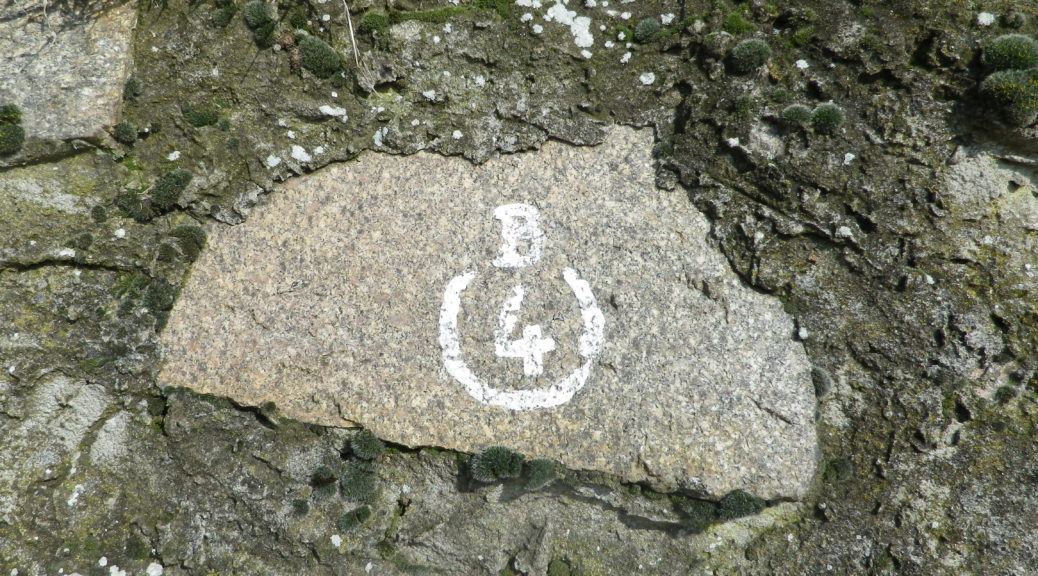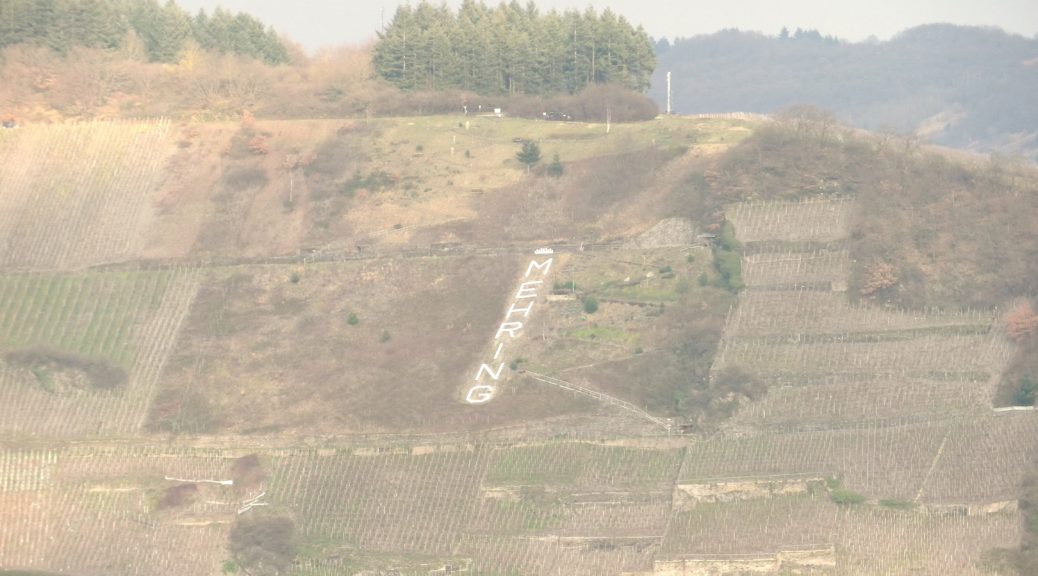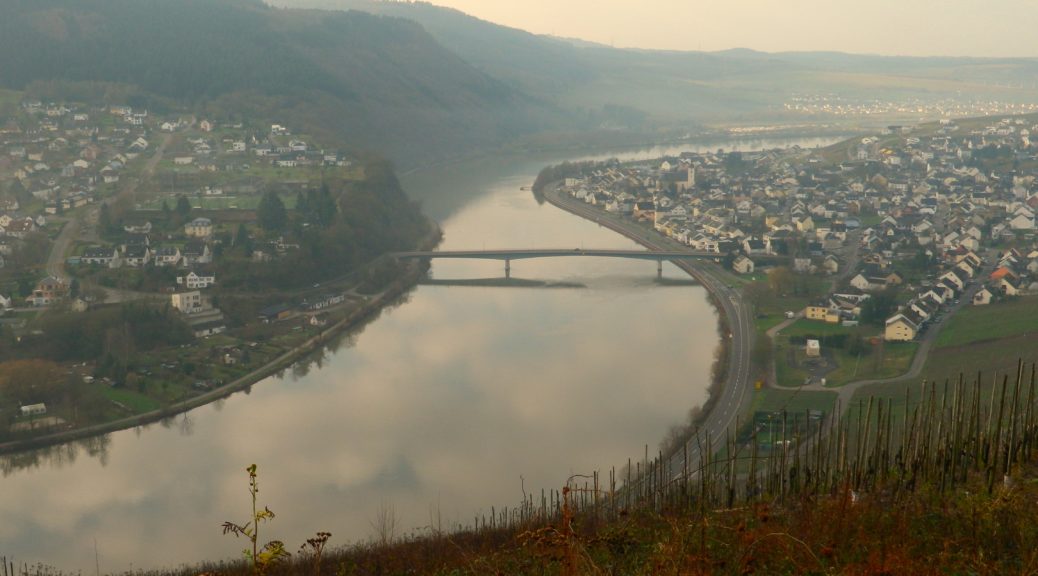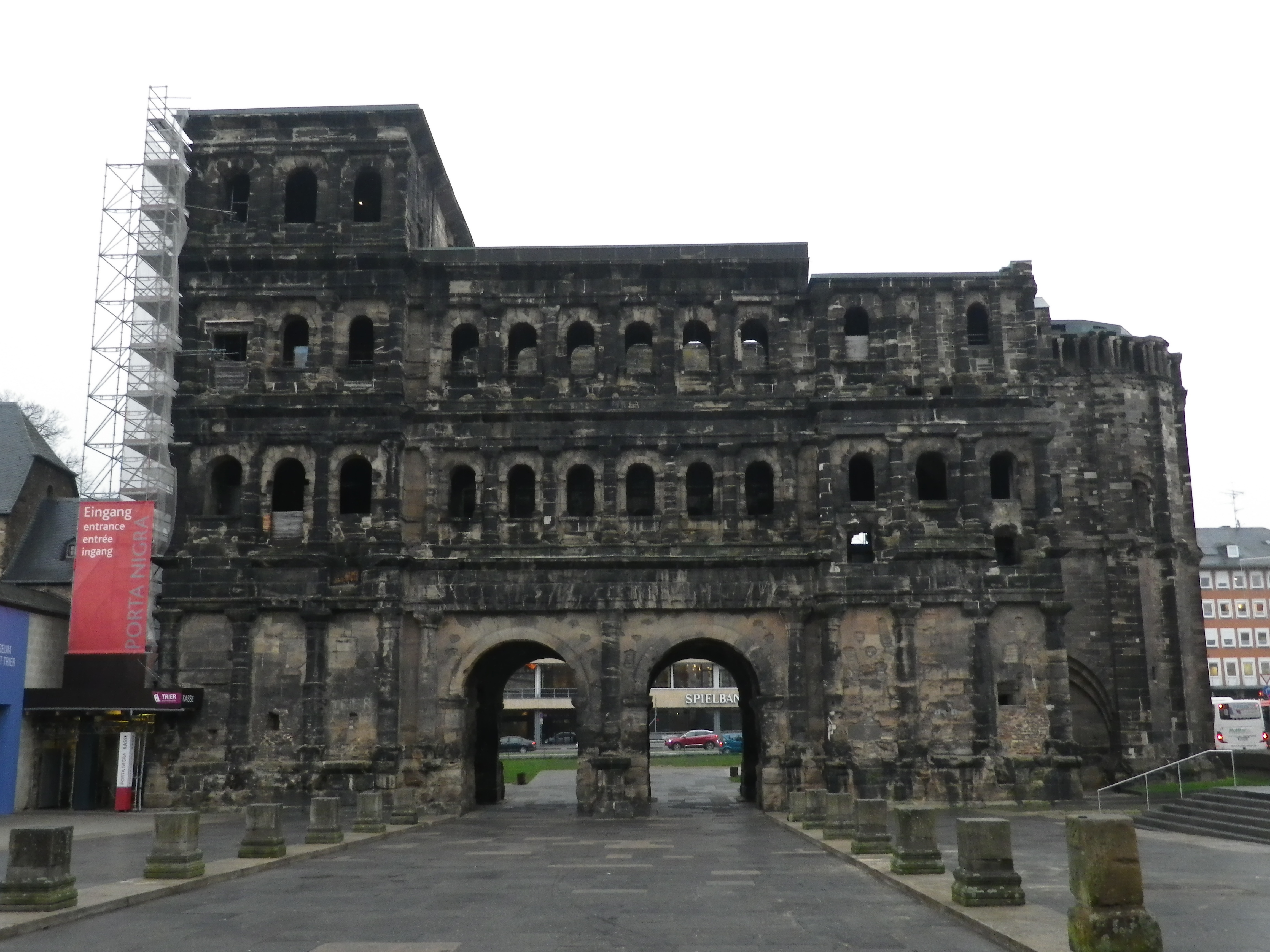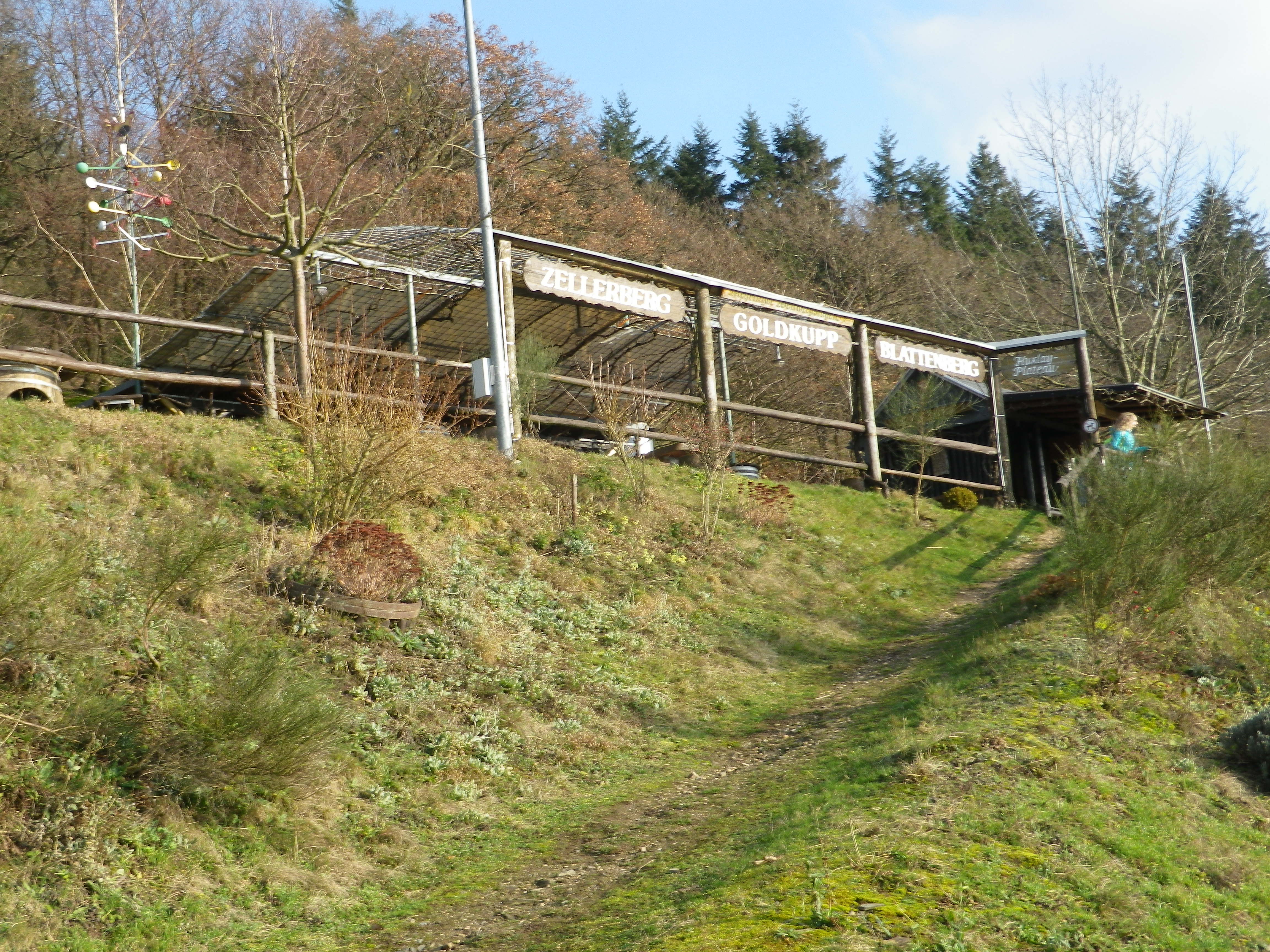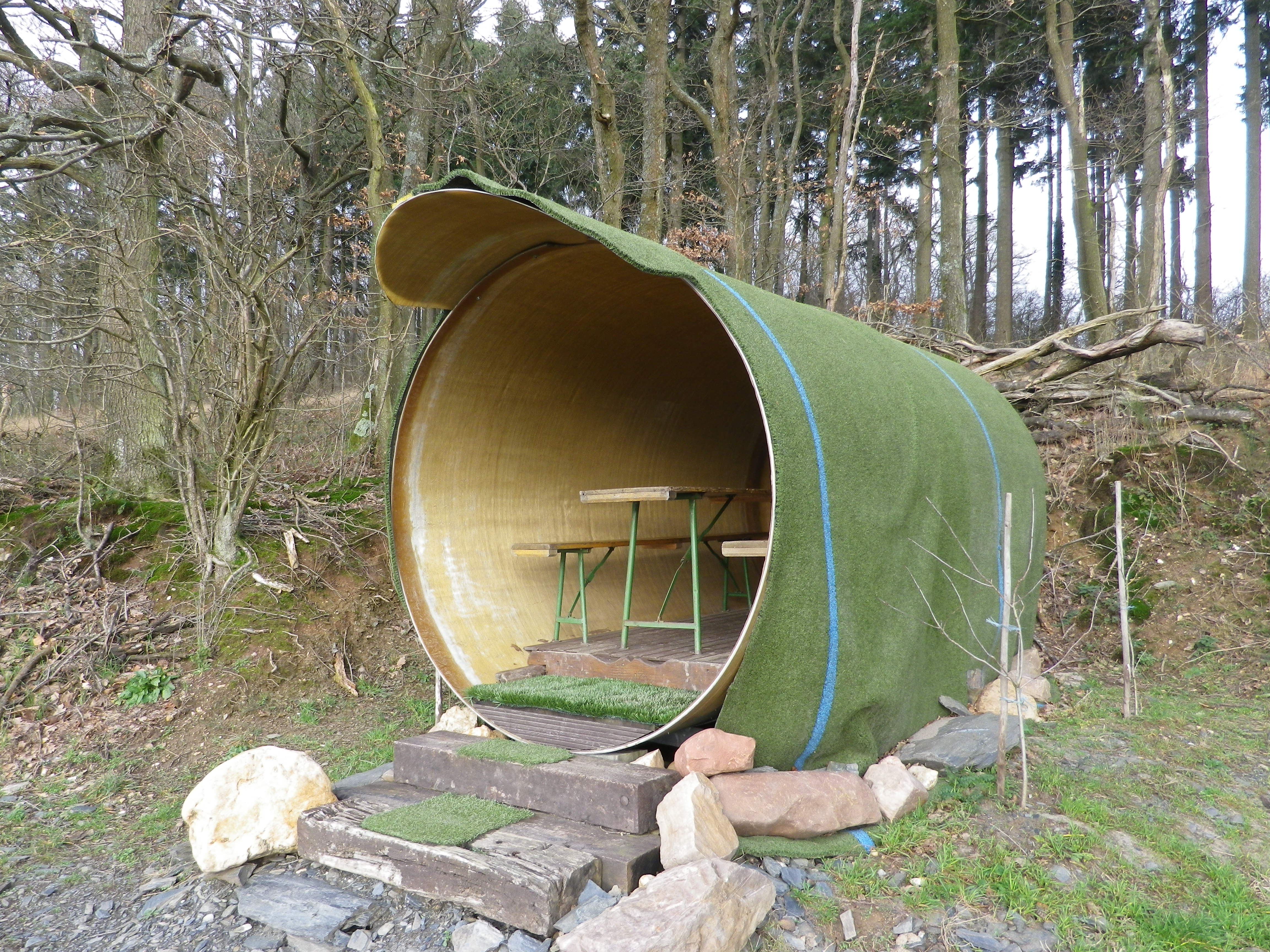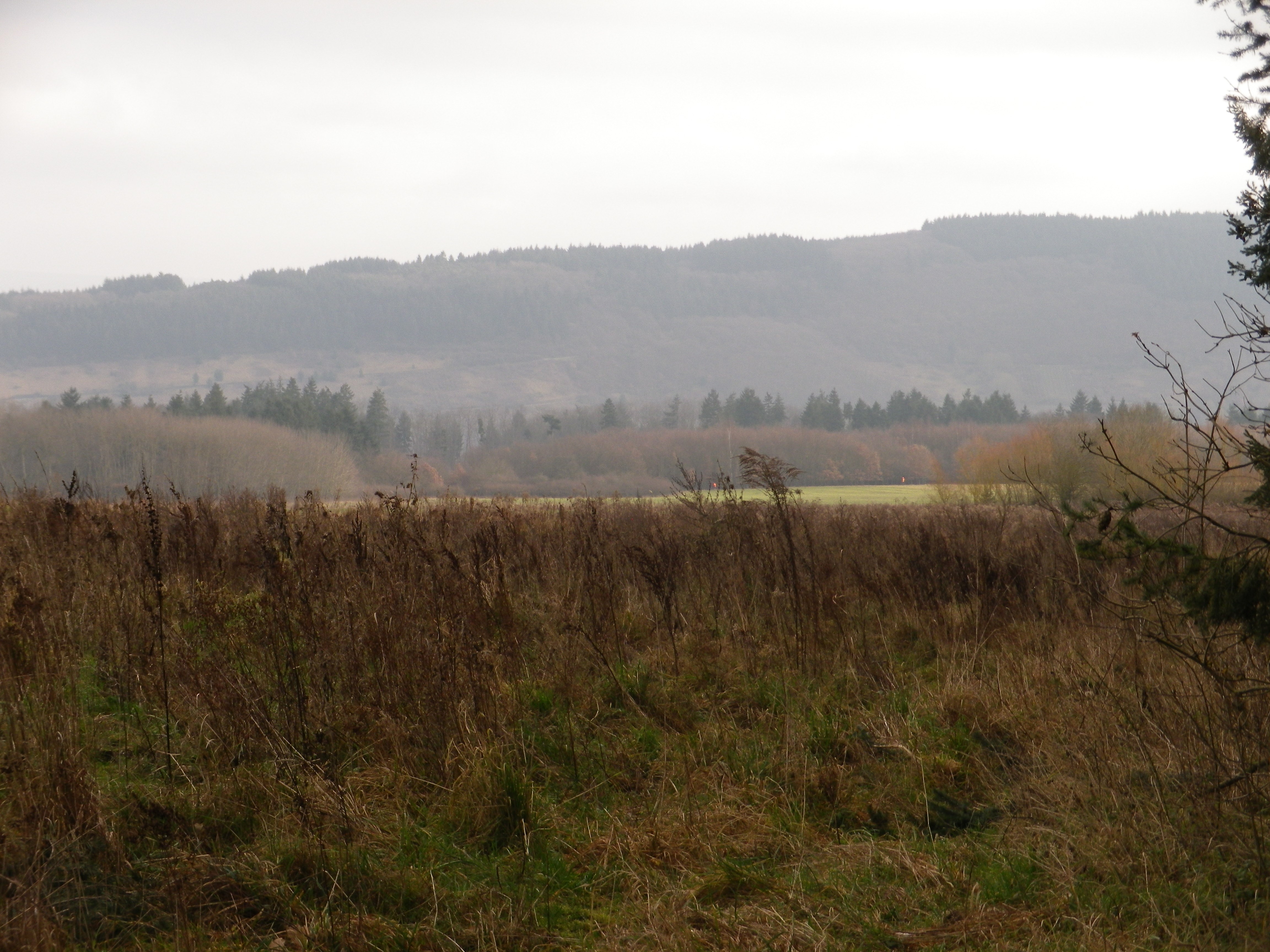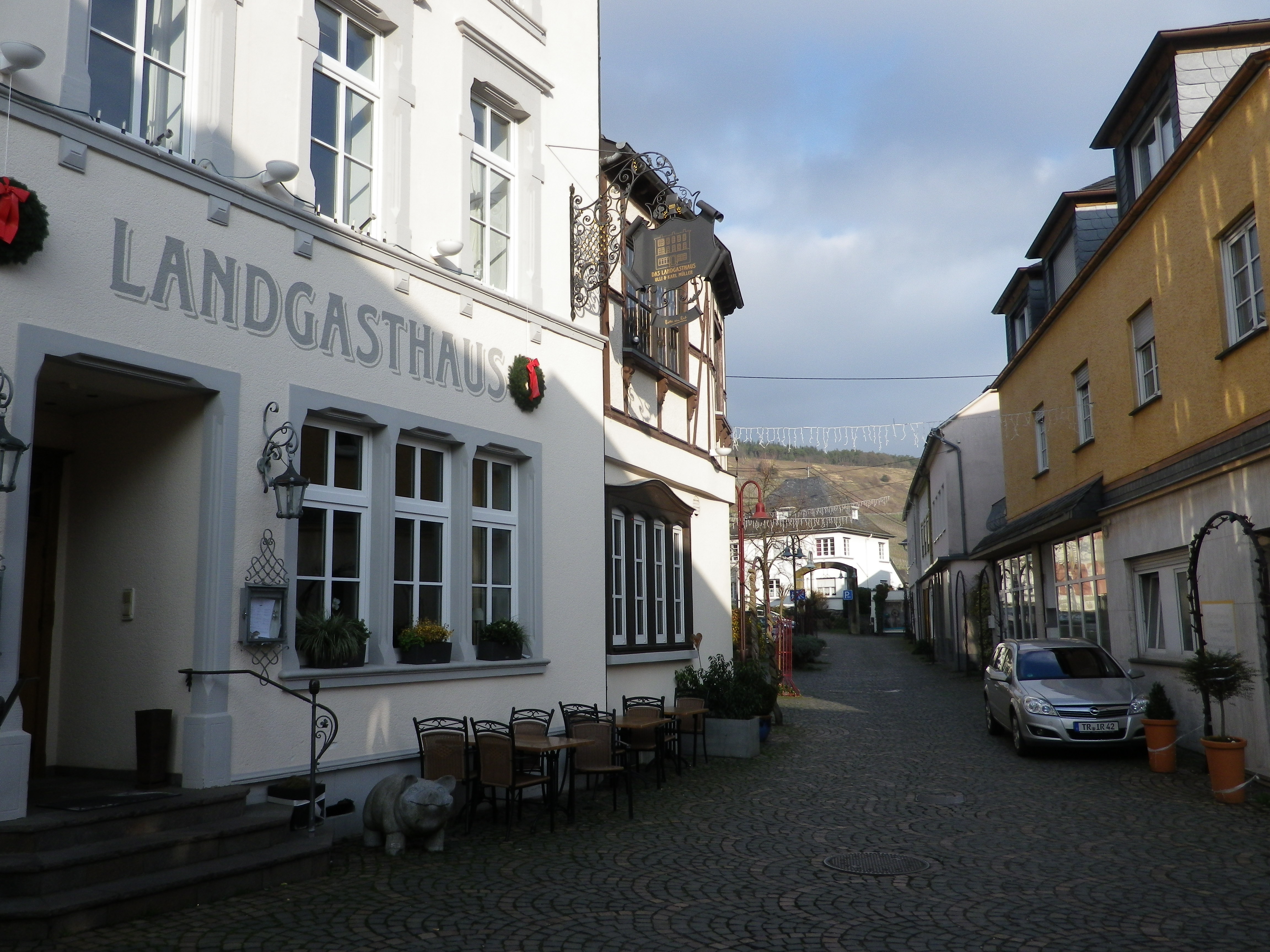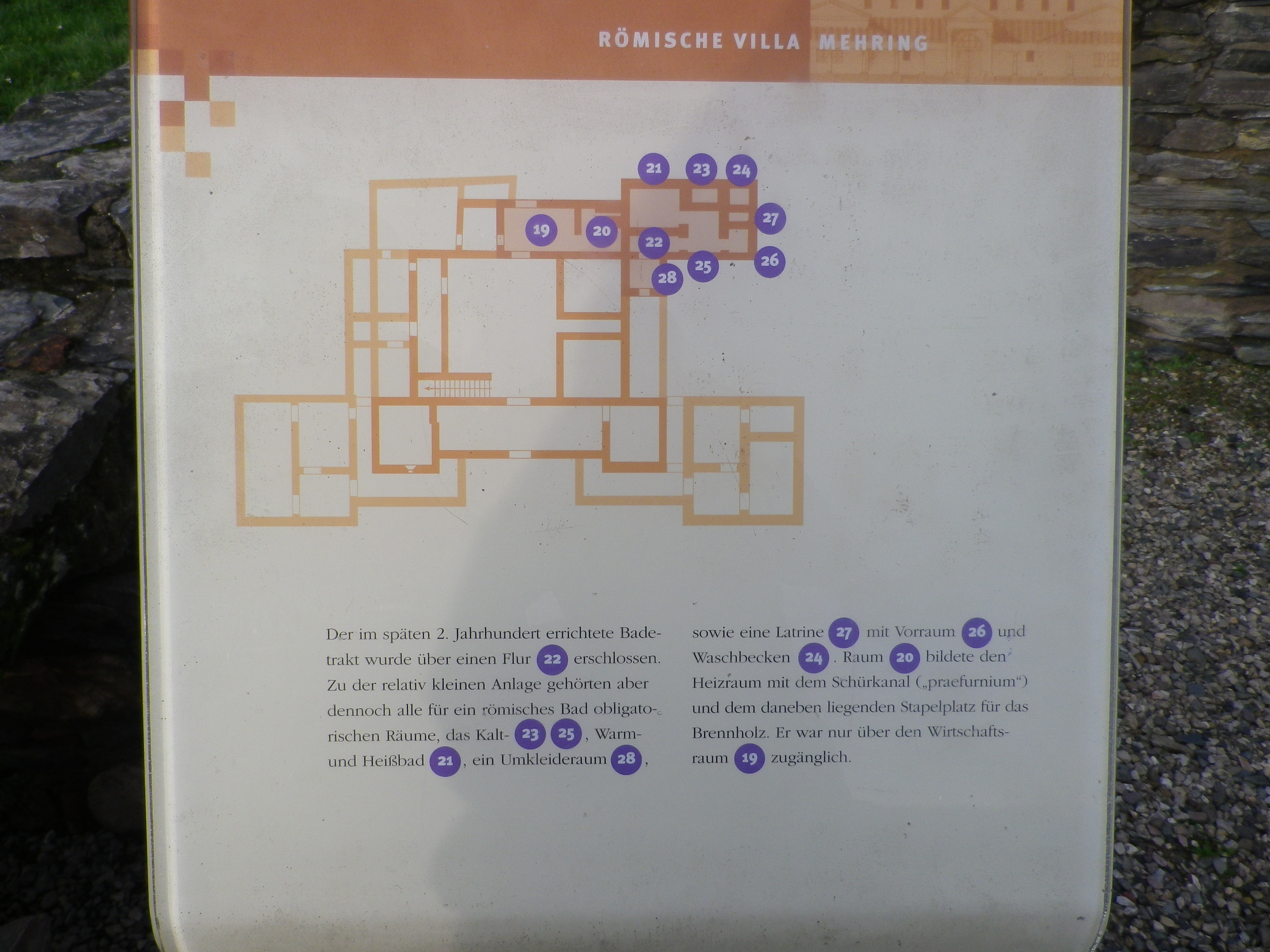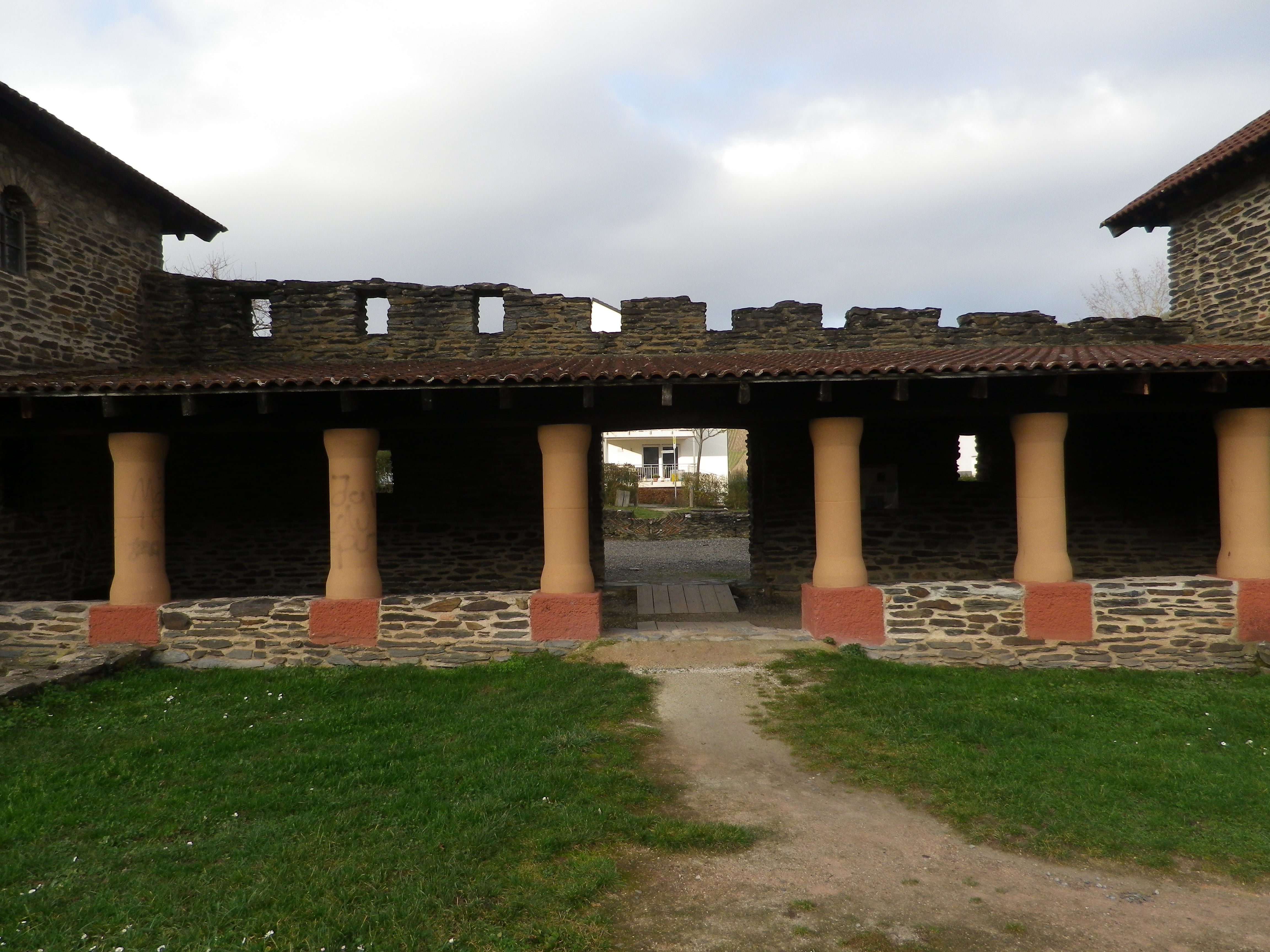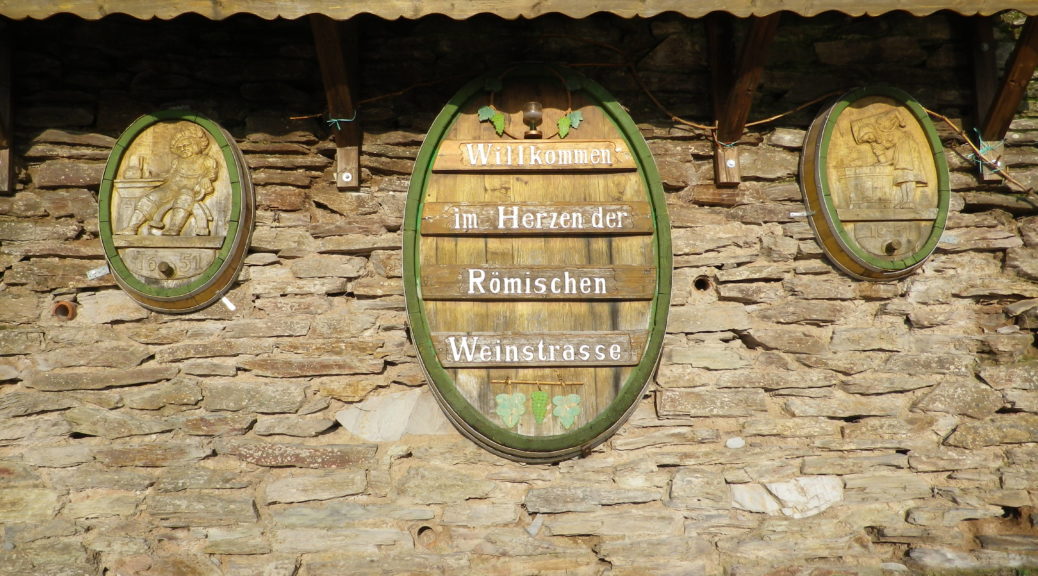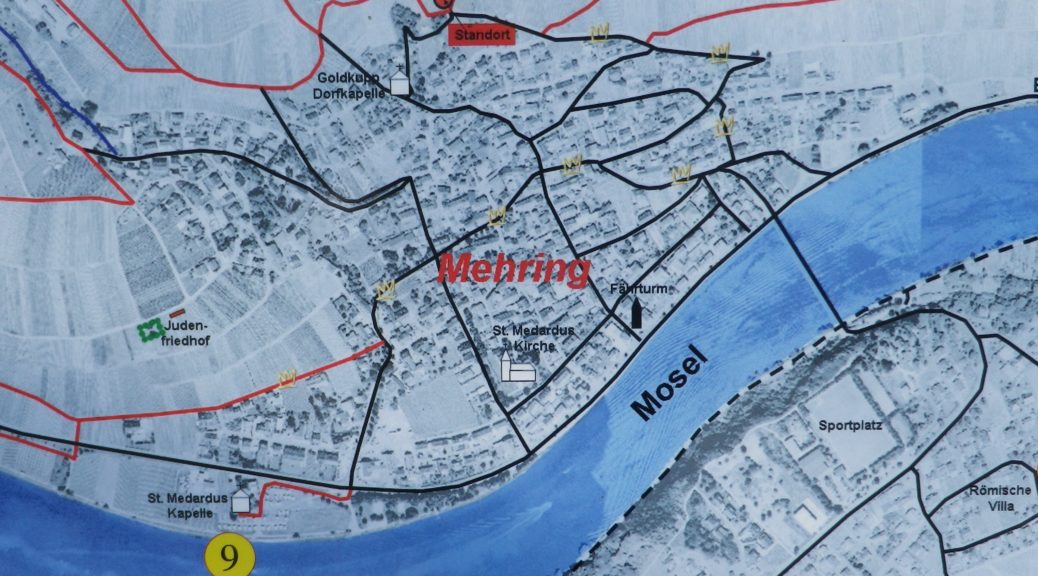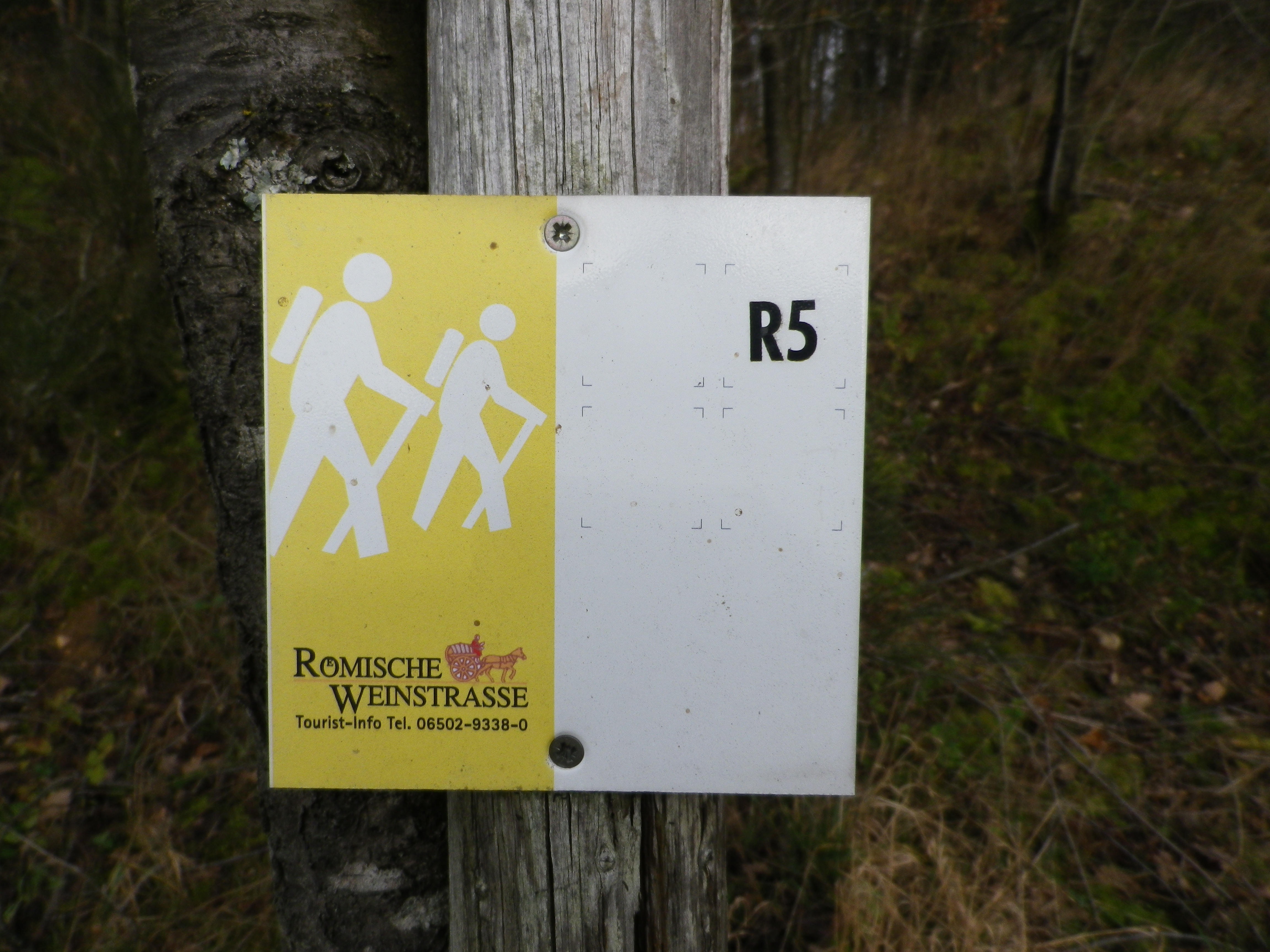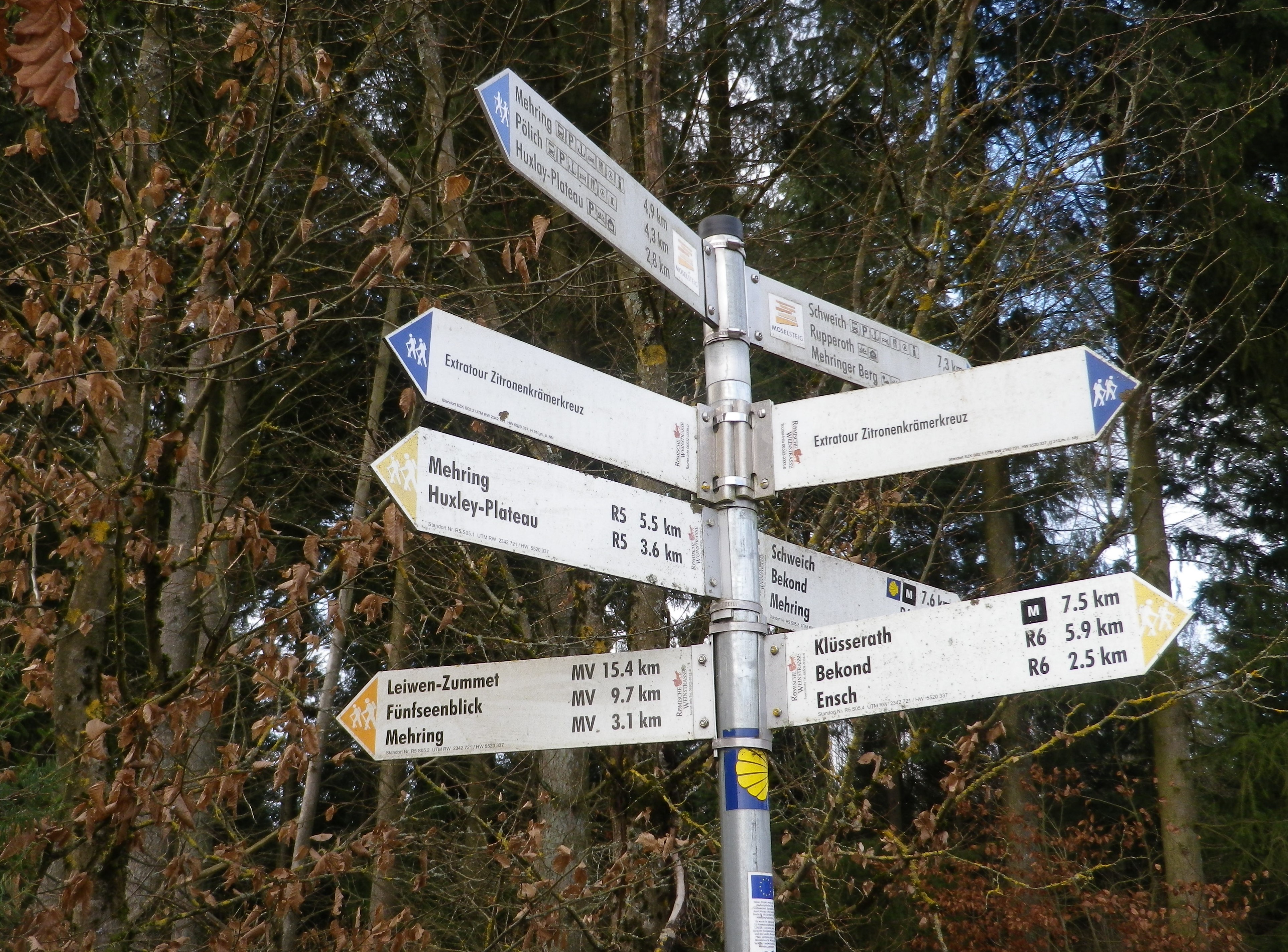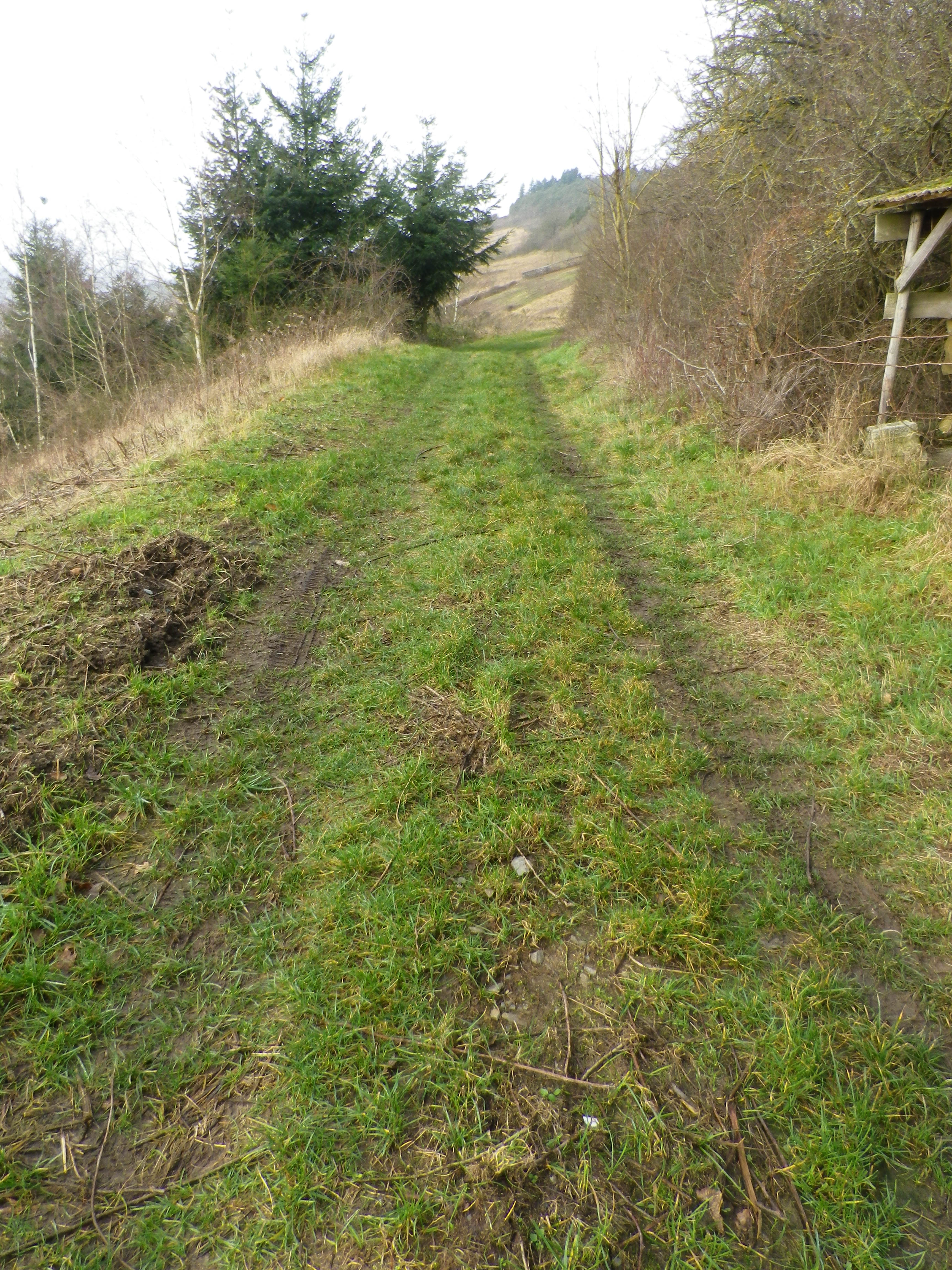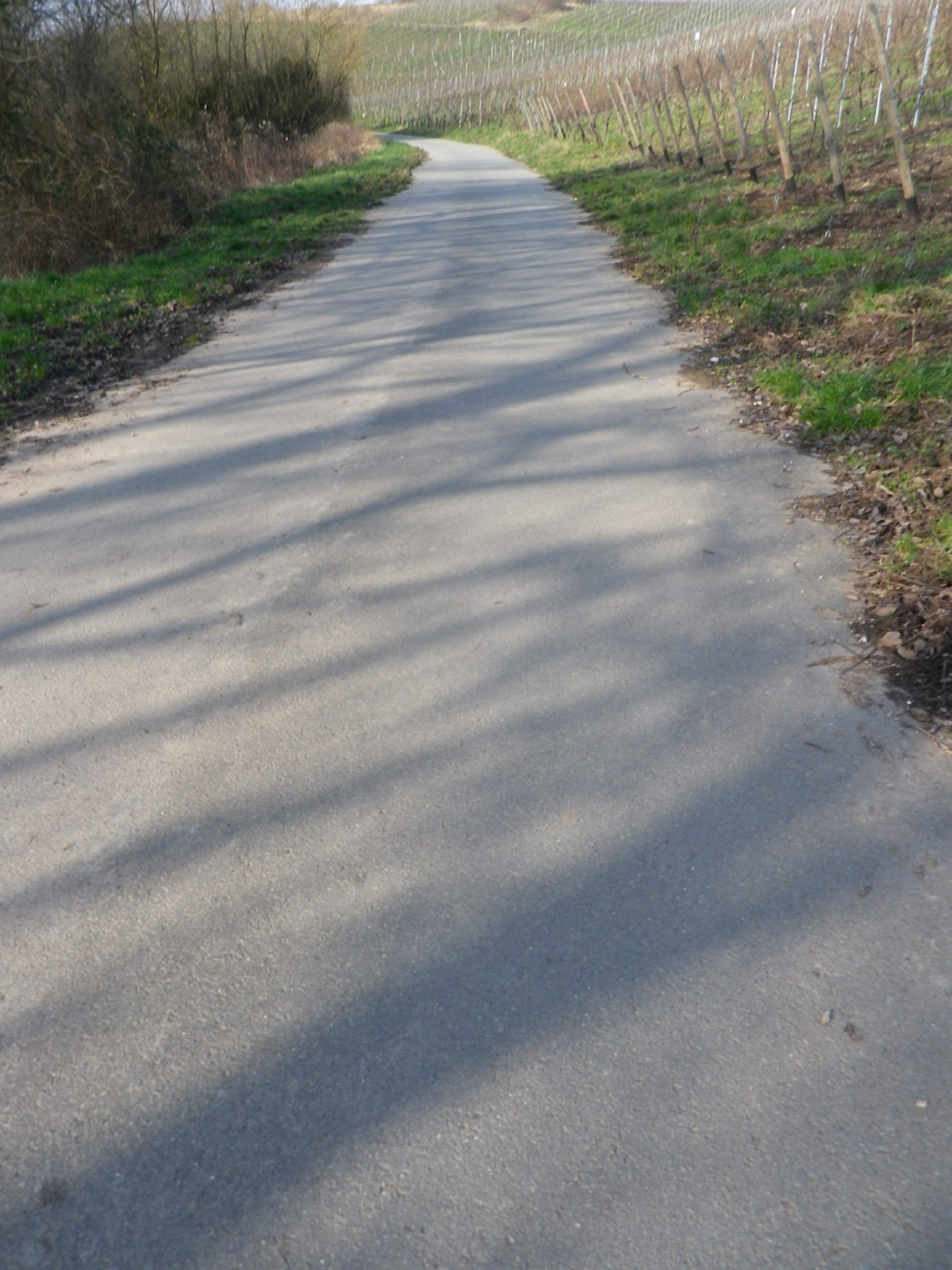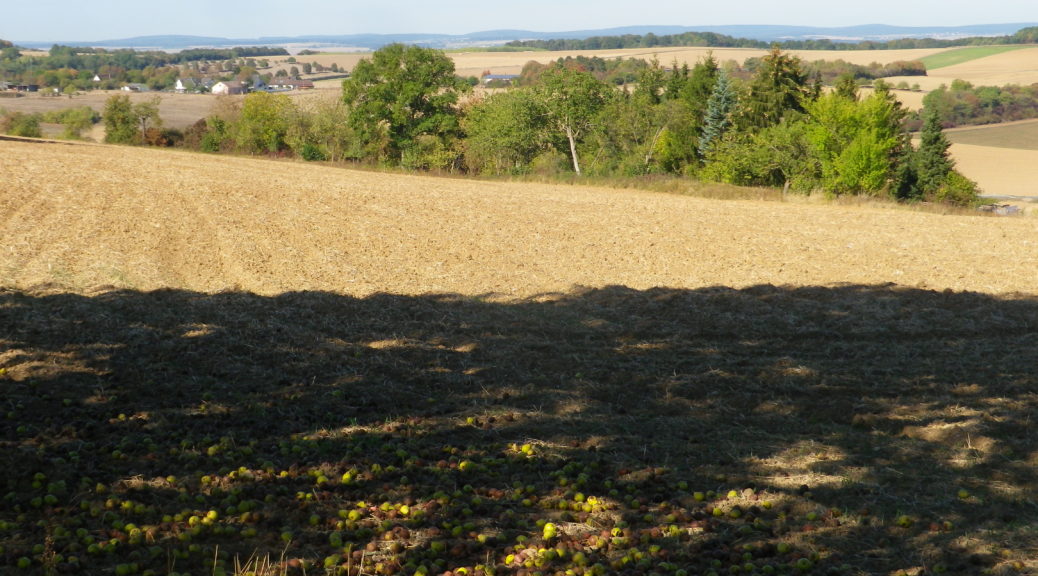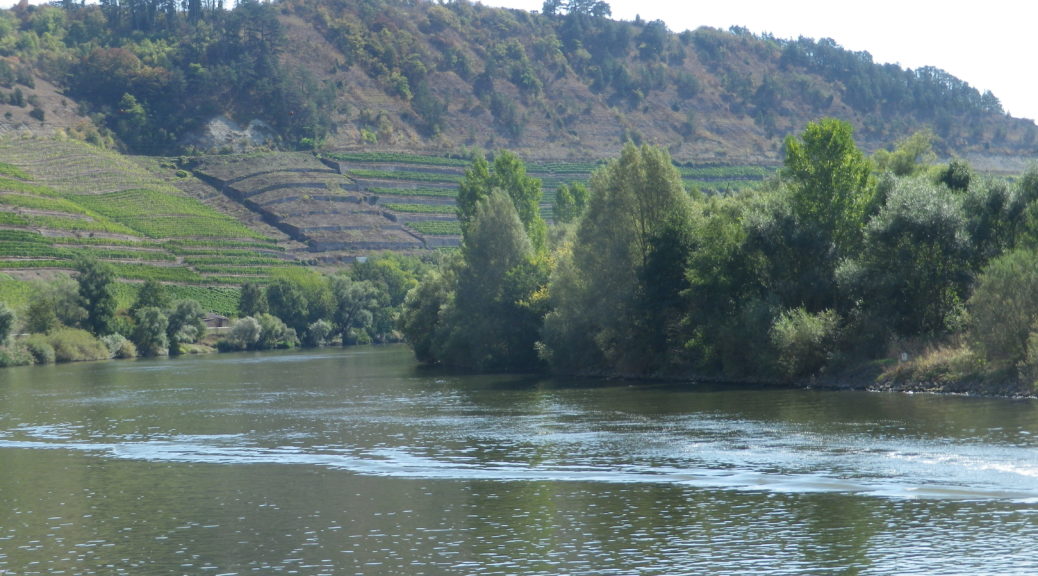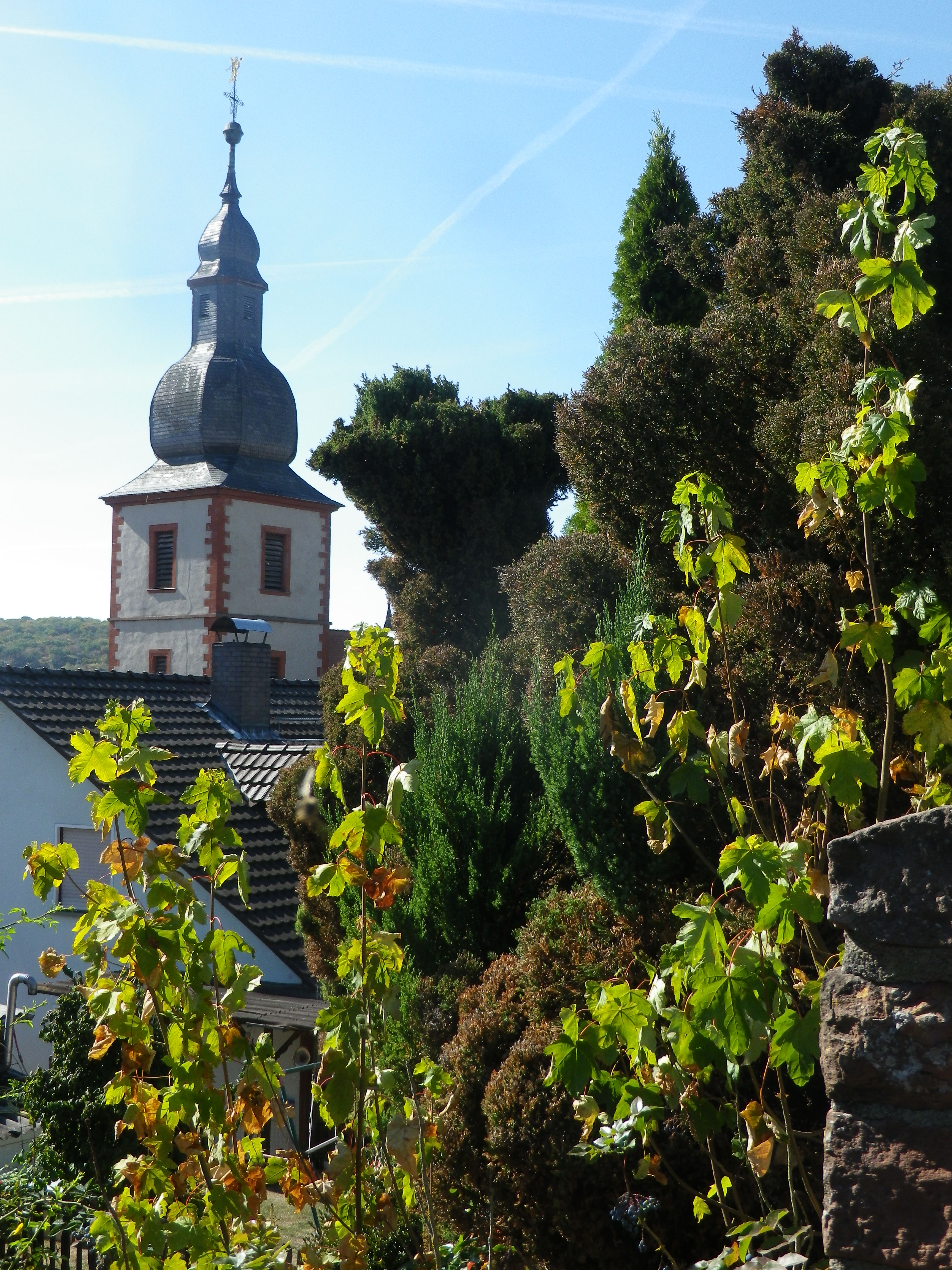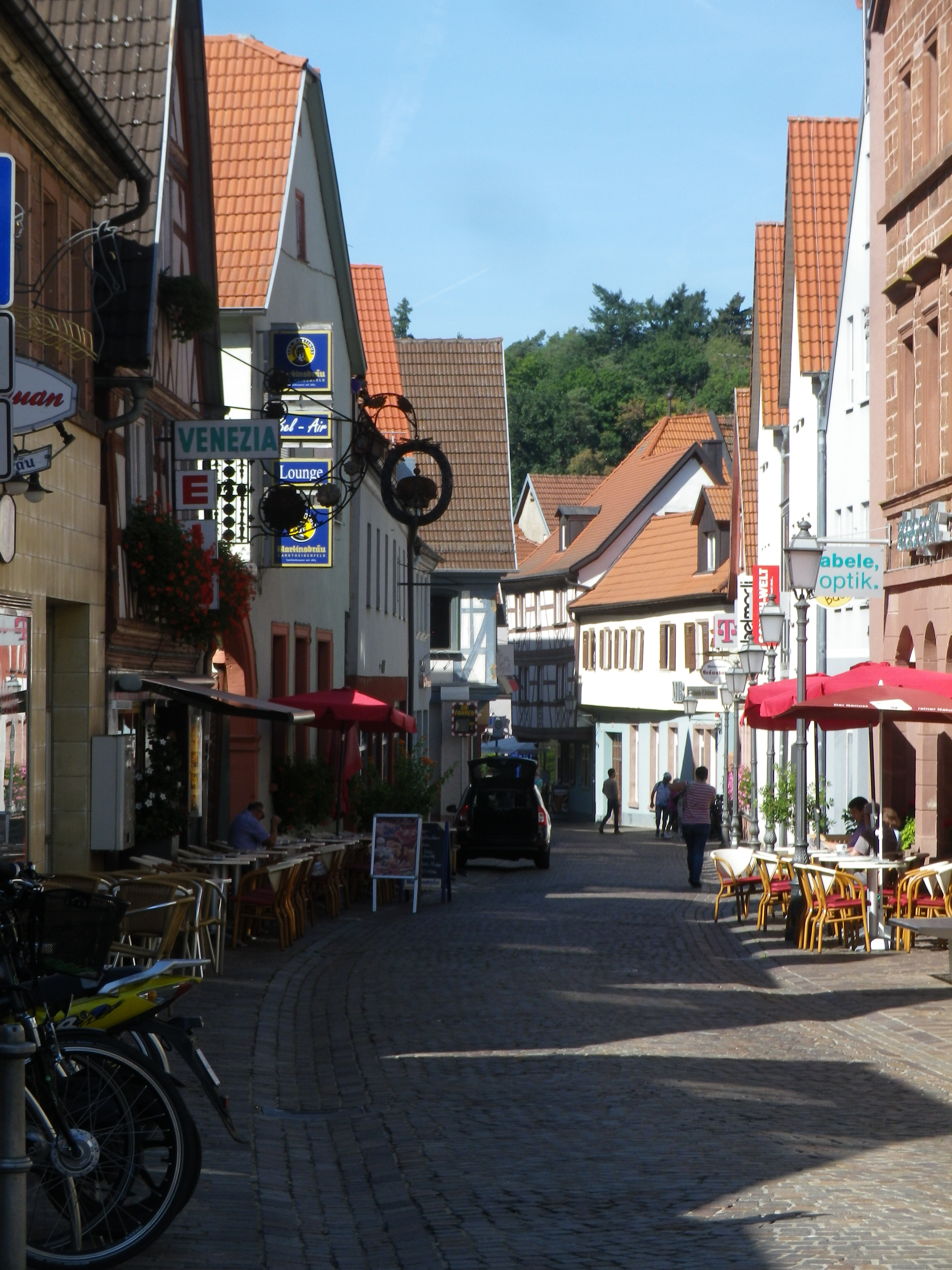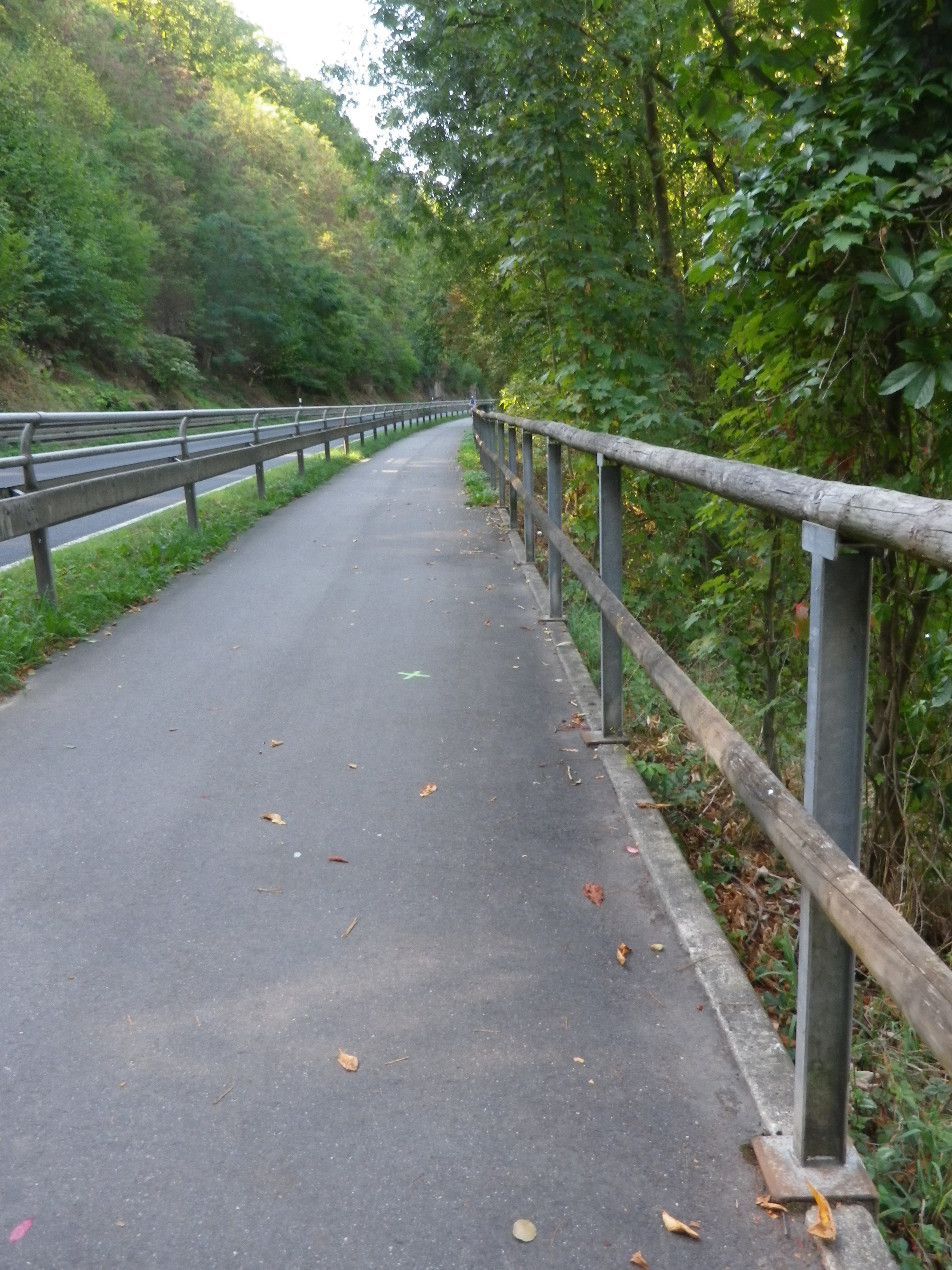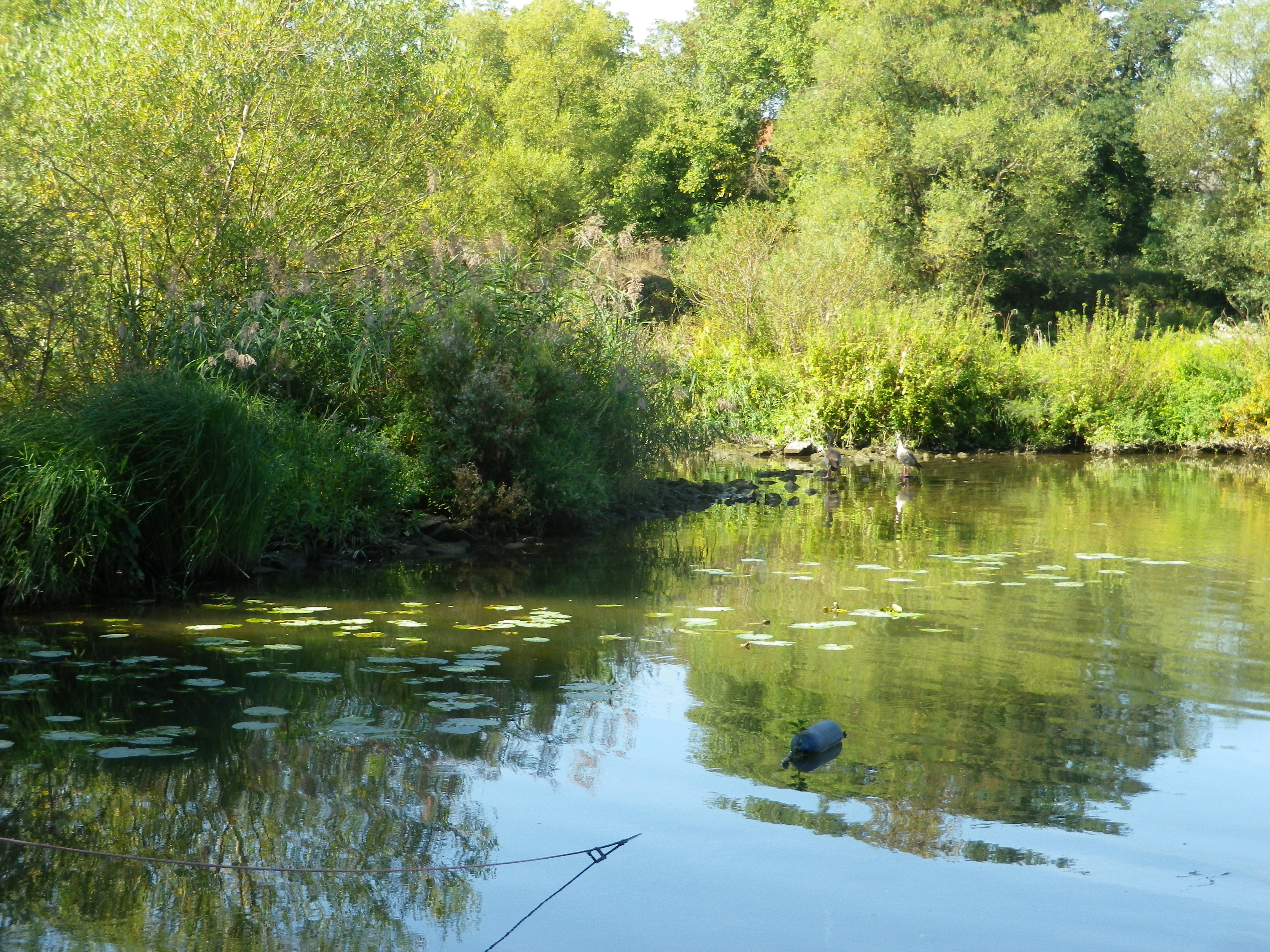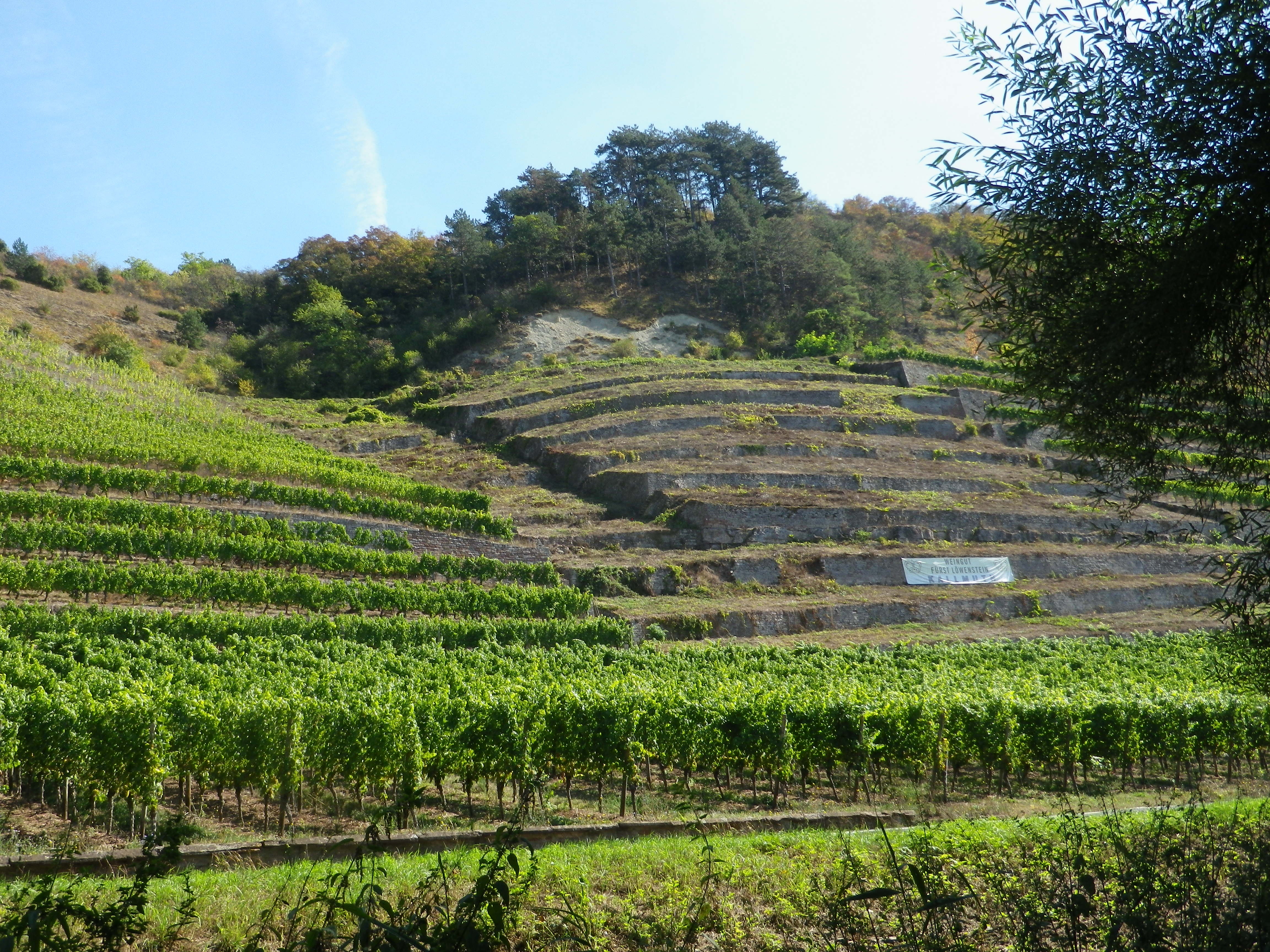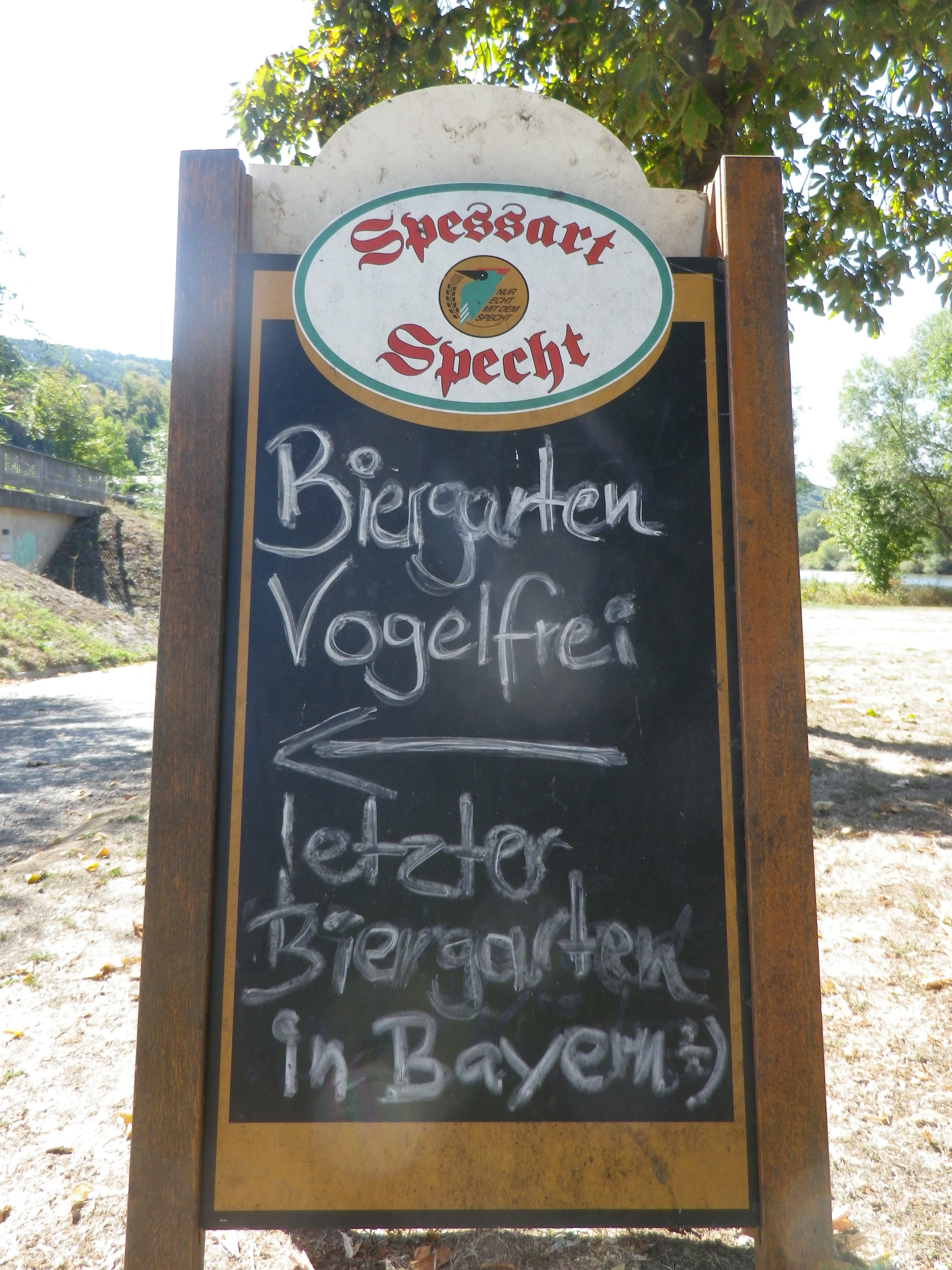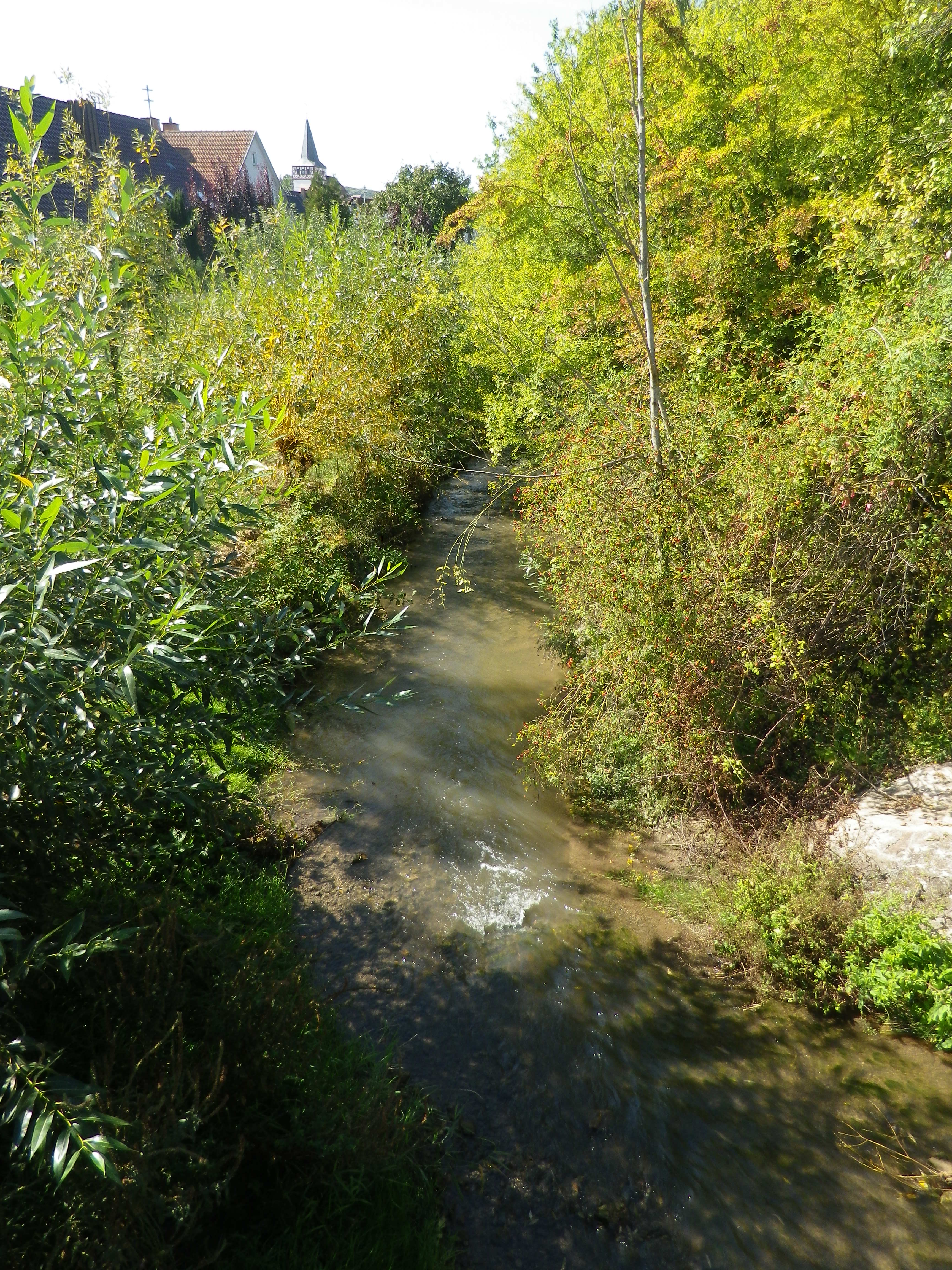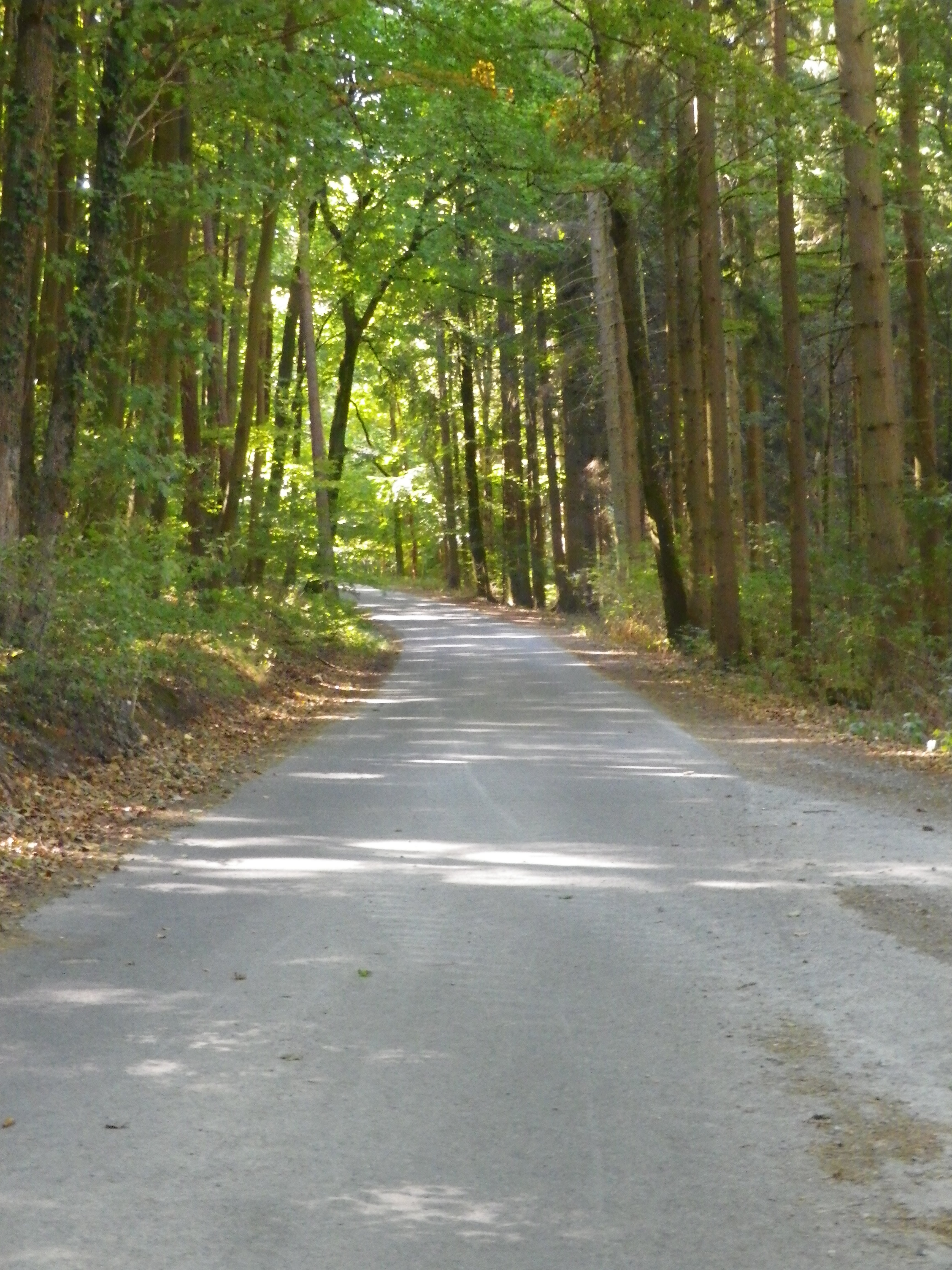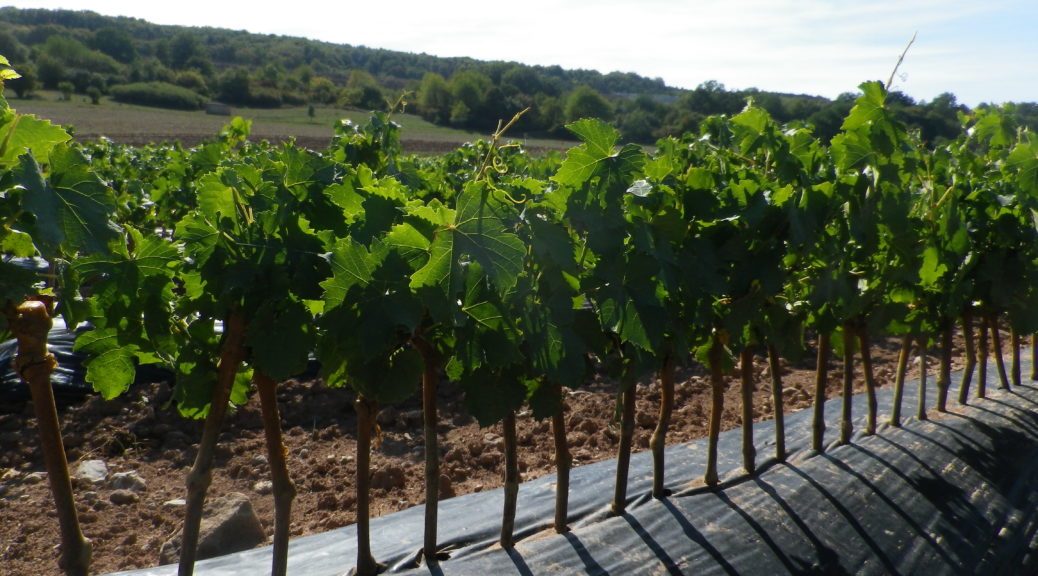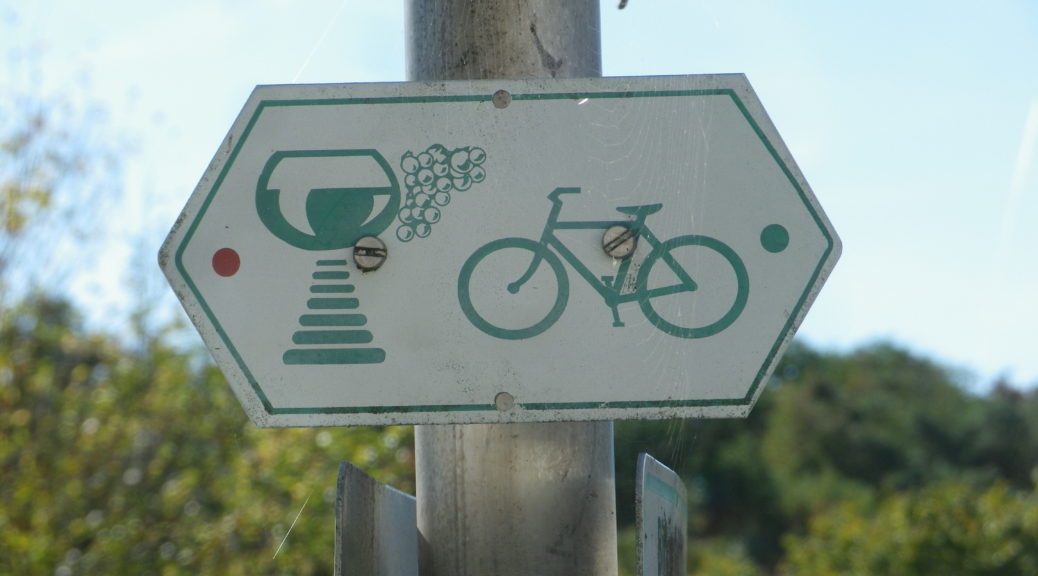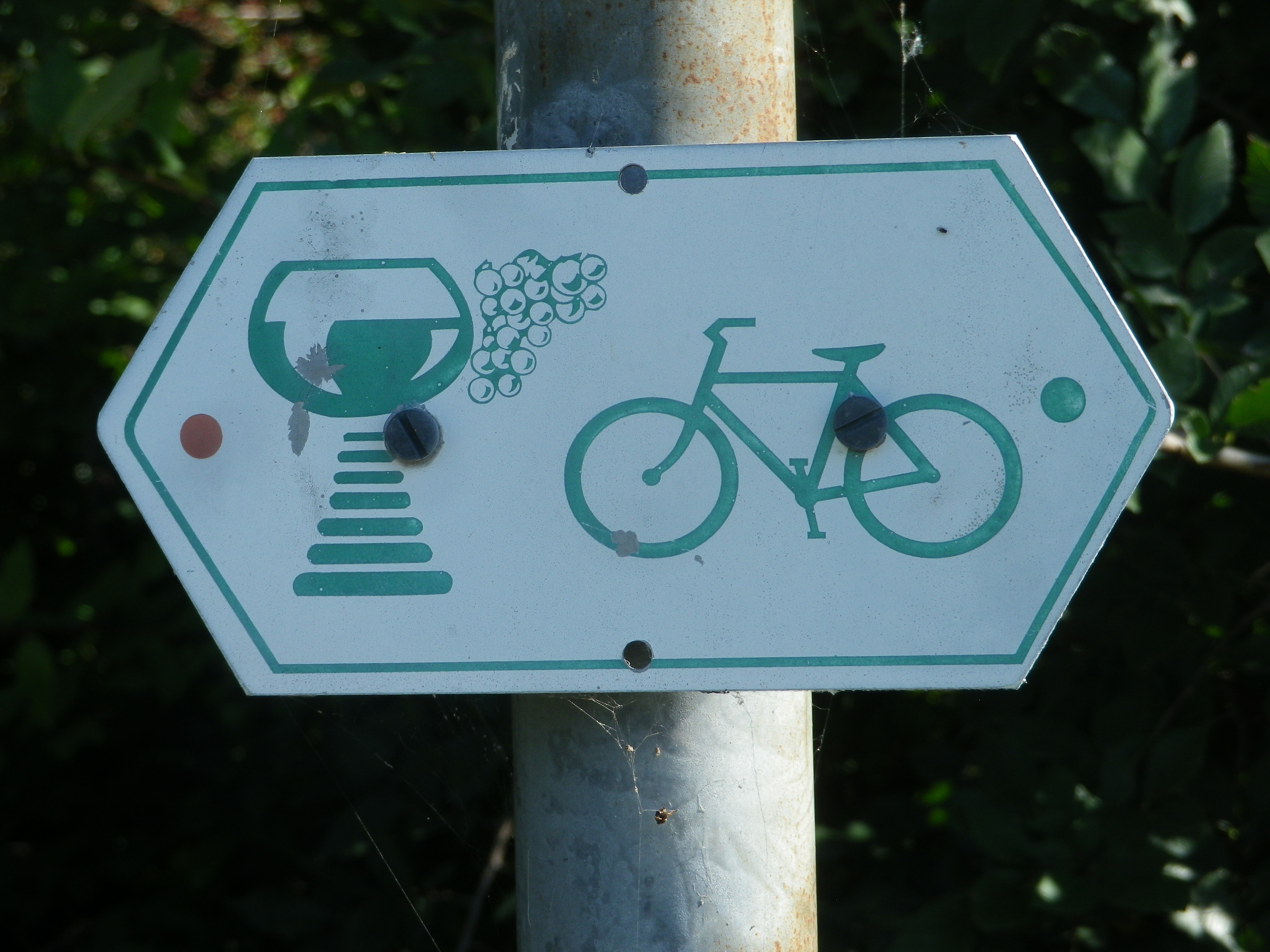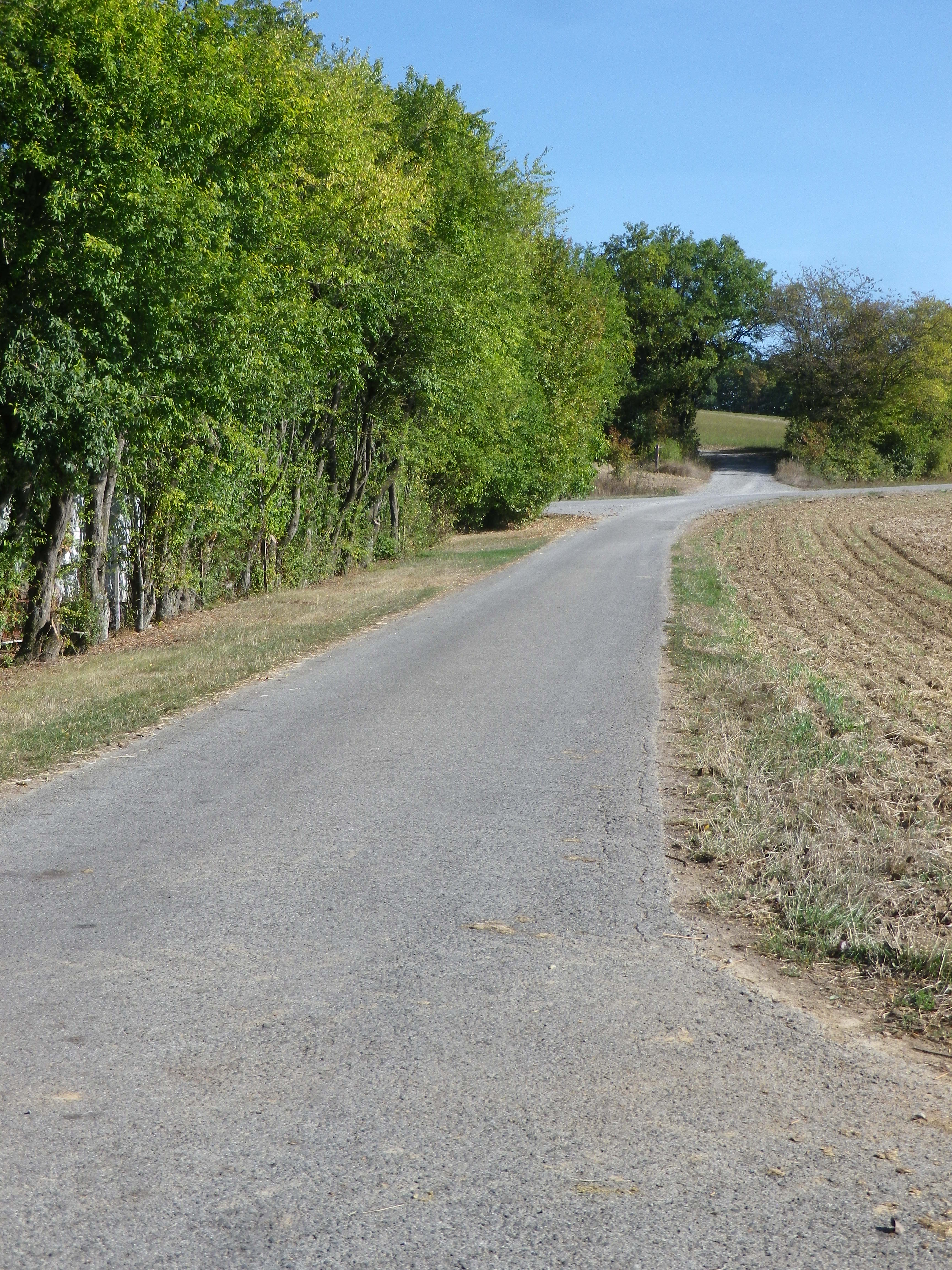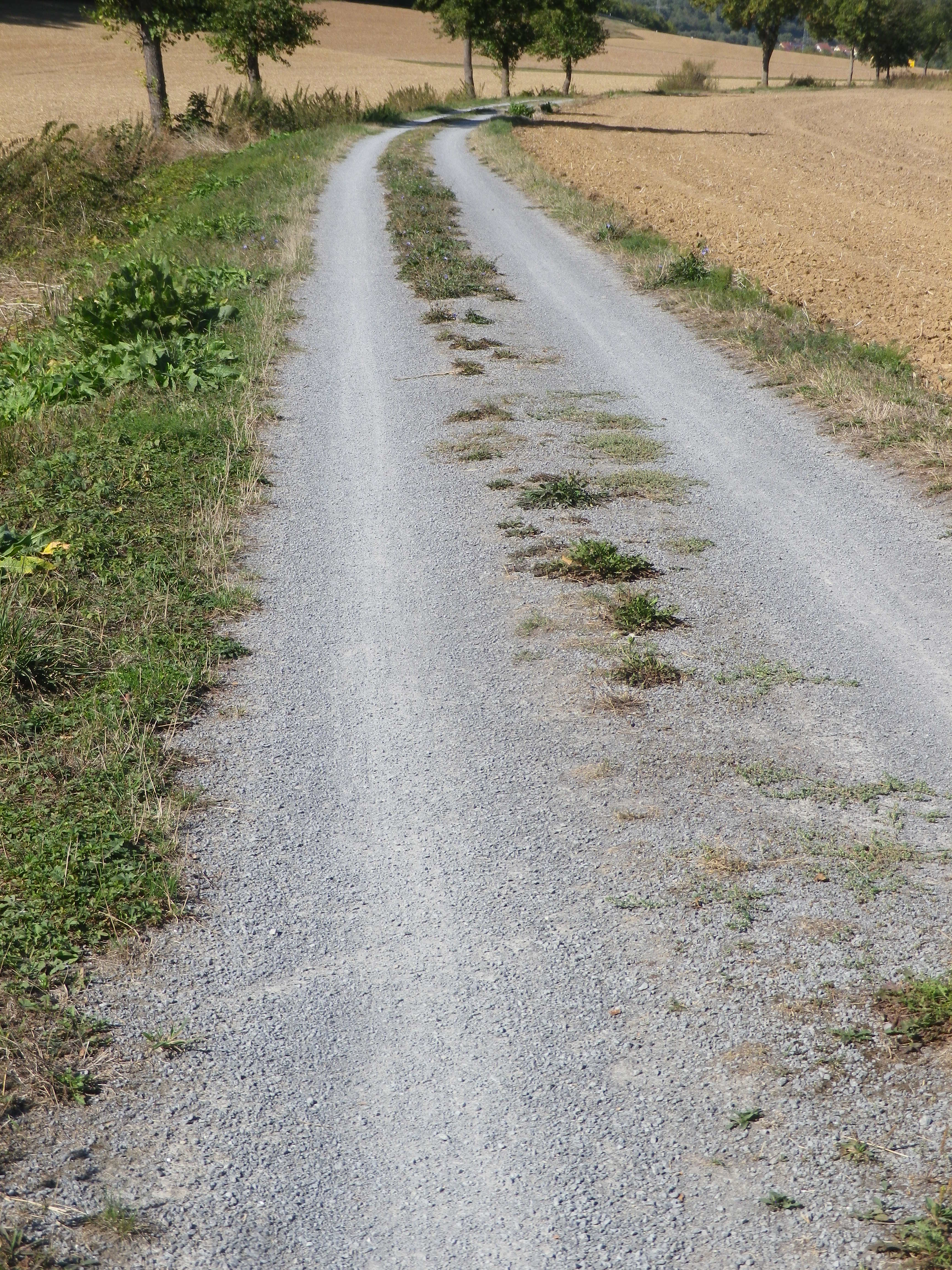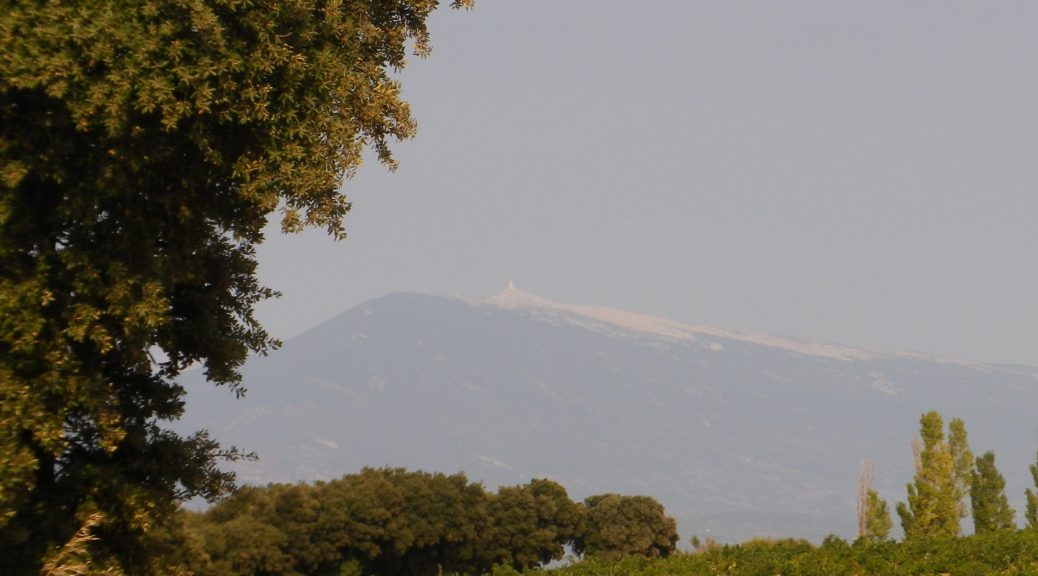Trail Name: Lichte Hoehe, Weinberge und Waelder (AKA: (Benheim’s) B4, and Gronau Weg)
Trail Type: Mid-distance circuit trail; partly paved, otherwise hard-packed earthen surfaces, well maintained, route well marked in most places.
Length:
Total: 13 km/8 miles
Marking: B4, written in white letters on a number of surfaces. See the photos below and above.
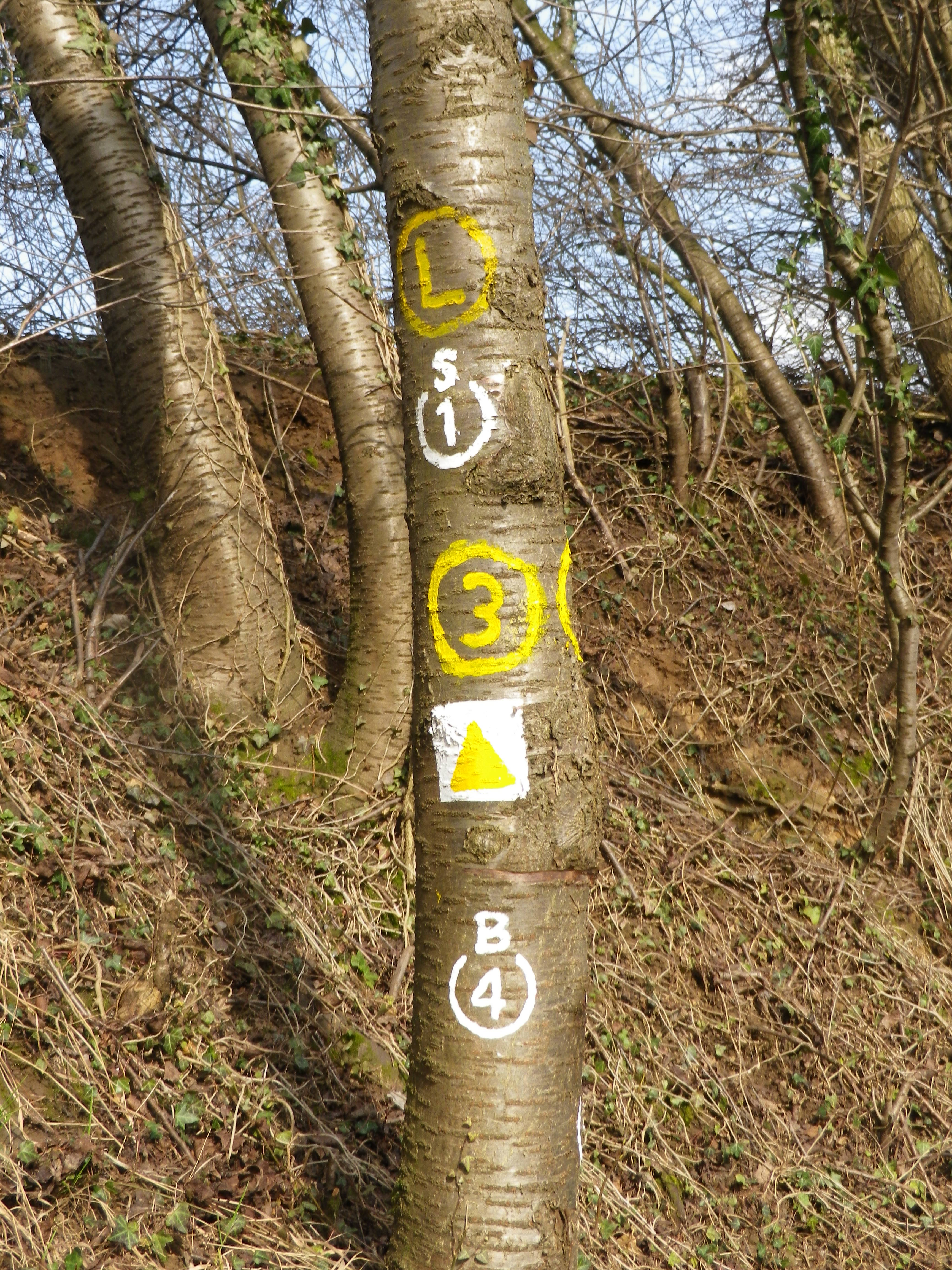
Trail Description: A real rambler’s ideal: such a variety of landscape, vegetation, and views can be difficult to find along other short trails. Mostly easy, with a couple of mildly challenging ascents, this trail, proceeding from urban to fields and forests, and back, seemed miles from Heidelberg and the busy Rhine River Valley cities, but was quite accessible from them.
Trailhead:
Bensheim: B47 (Nibelungenstr) x Bassmannweg
Parking Possibilities:
Bensheim: B47 (Nibelungenstr) x Bassmannweg
Public Transportation Options:
Rail: Frequent trains from most major cities north, south and west of this town. Check Deutsche Bahn for details.
Suggested Stages: Not applicable
Trail Itinerary-Reference Points: (clockwise)
Bensheim: Hauptstrasse x Gebergasse, Friedhofstr, past the cemetery and church, Hemsbergstr- Hemsbergweg, follow toward Hemsberg, vineyards, fields to Gronau; Gronau: Steinfoerstweg, Maerkerwaldstr; follow signs toward Schoenberger Kreuz; forest, Nibelungenstr (and path beside the Lauter creek); Bensheim: Bleichstr, Augartenstr, pass Marktplatz, Hauptstrasse.
Representative Trail Photos:
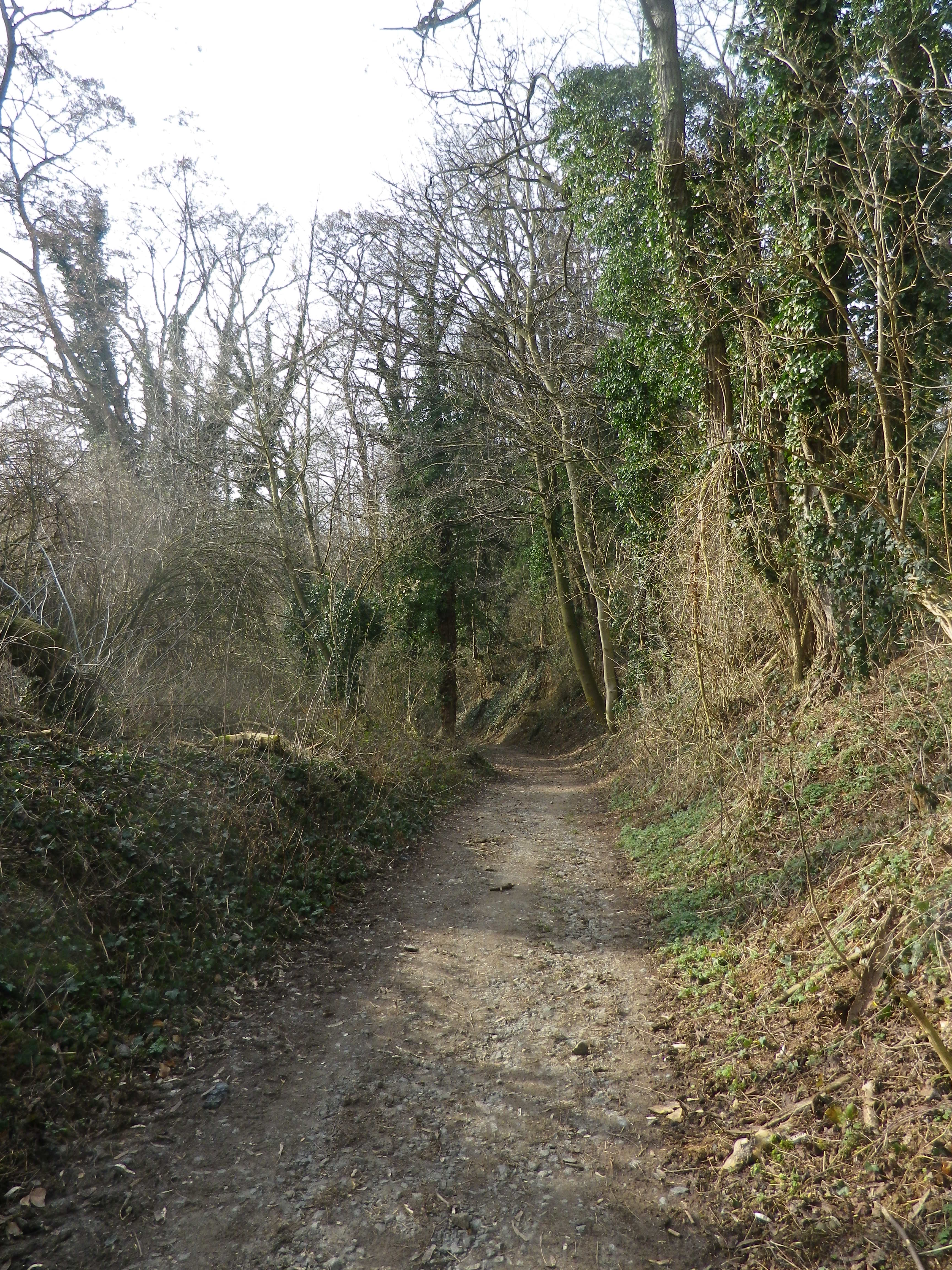
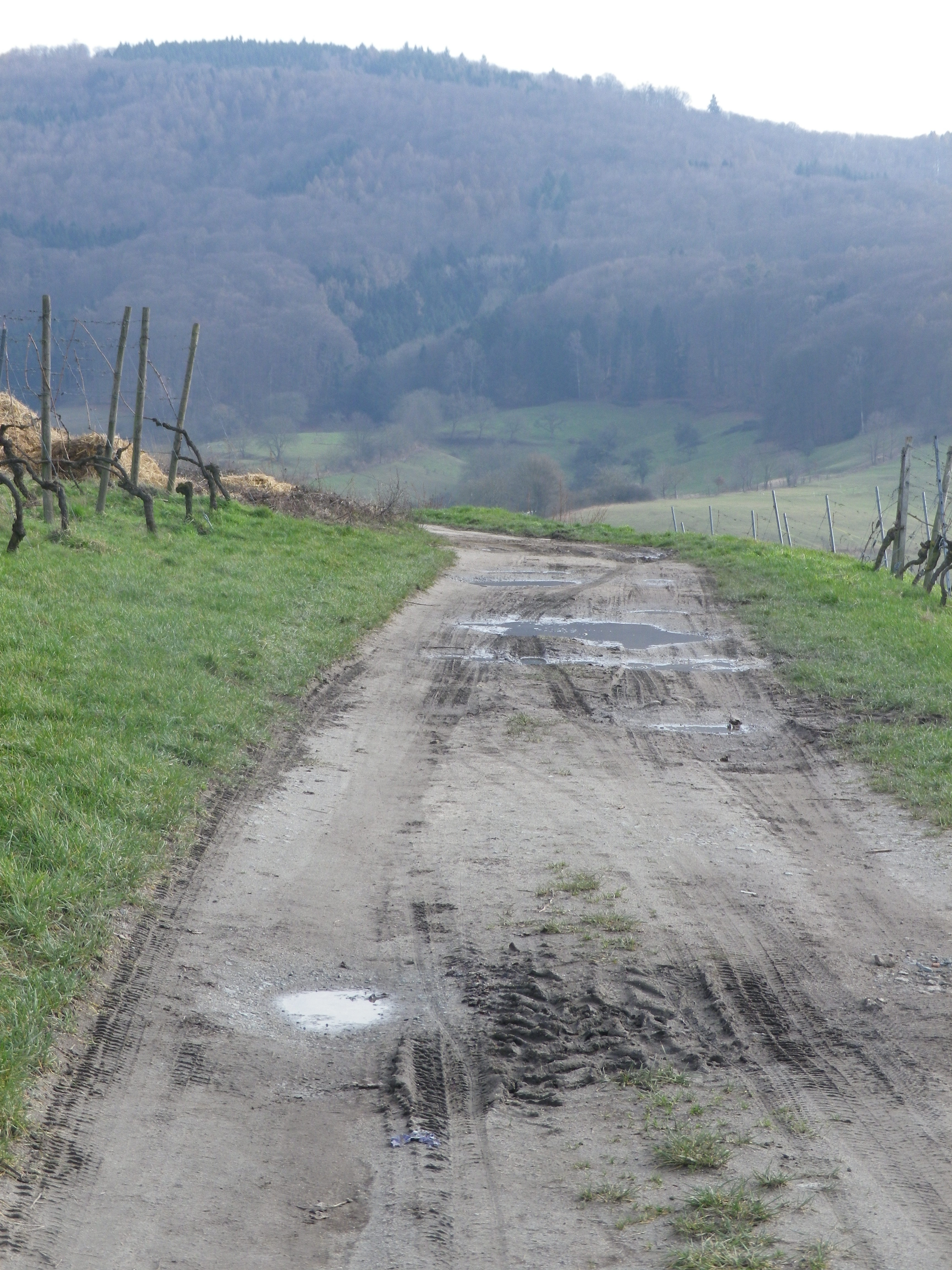
Restrooms:
Bensheim: Haus am Markt, Marktplatz//Buergerbuero: Hauptstr 39//Bahnhof, in front of it
Attractions on or near Trail:
See Tasting notes below, reference Heppenheim.
Tasting along the Trail:
Bensheim: A couple of wine-makers in the town of Bensheim, several pubs/wine bars offering local wines.
Heppenheim: Nearby town has the Bergstraesser Winzer, a wine cooperative, wine shop and wine tasting lounge, where you will find lots of information about wines and wine-making in this area.
Alternative Options:
Biking: Winzer und Weinstuben Tour, an easy 19-kilometer long bicycle route passing vineyards, wine bars and wineries. See the Nutshell here.
Car: Ferienstrasse Bergstrasse, a 28-kilometer car touring route, includes Bensheim and many more towns, many of them wine producing towns, from Darmstadt to Heidelberg.
Additional Information:
Regional: https://www.bensheim.de/tourismus/touristinformation.html
Trail specific: https://www.bensheim.de/fileadmin/media/bensheim/06-Tourismus/Wanderungen-um-Bensheim.pdf (starting p. 32); AKA: Gronau-Weg
Comments:
The trail name says it all: An easy and very relaxing experience, in a little-known wine region.
